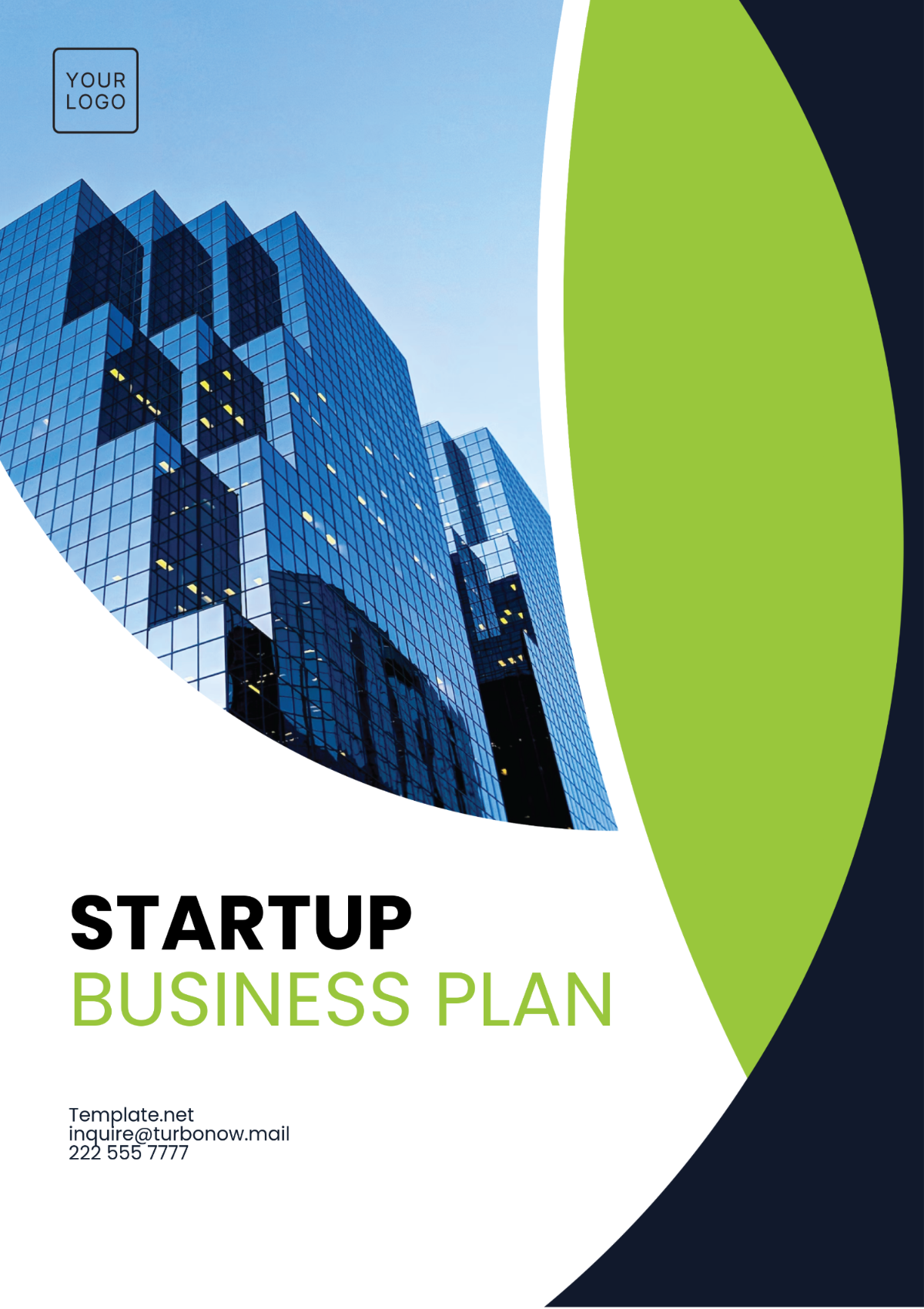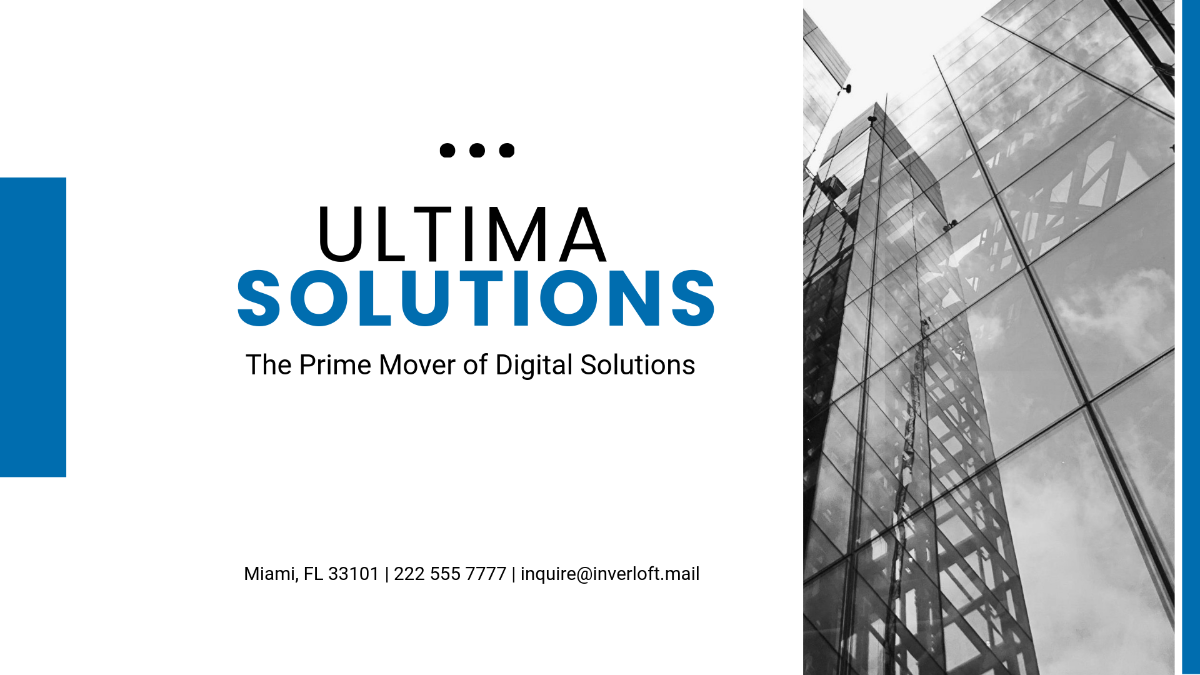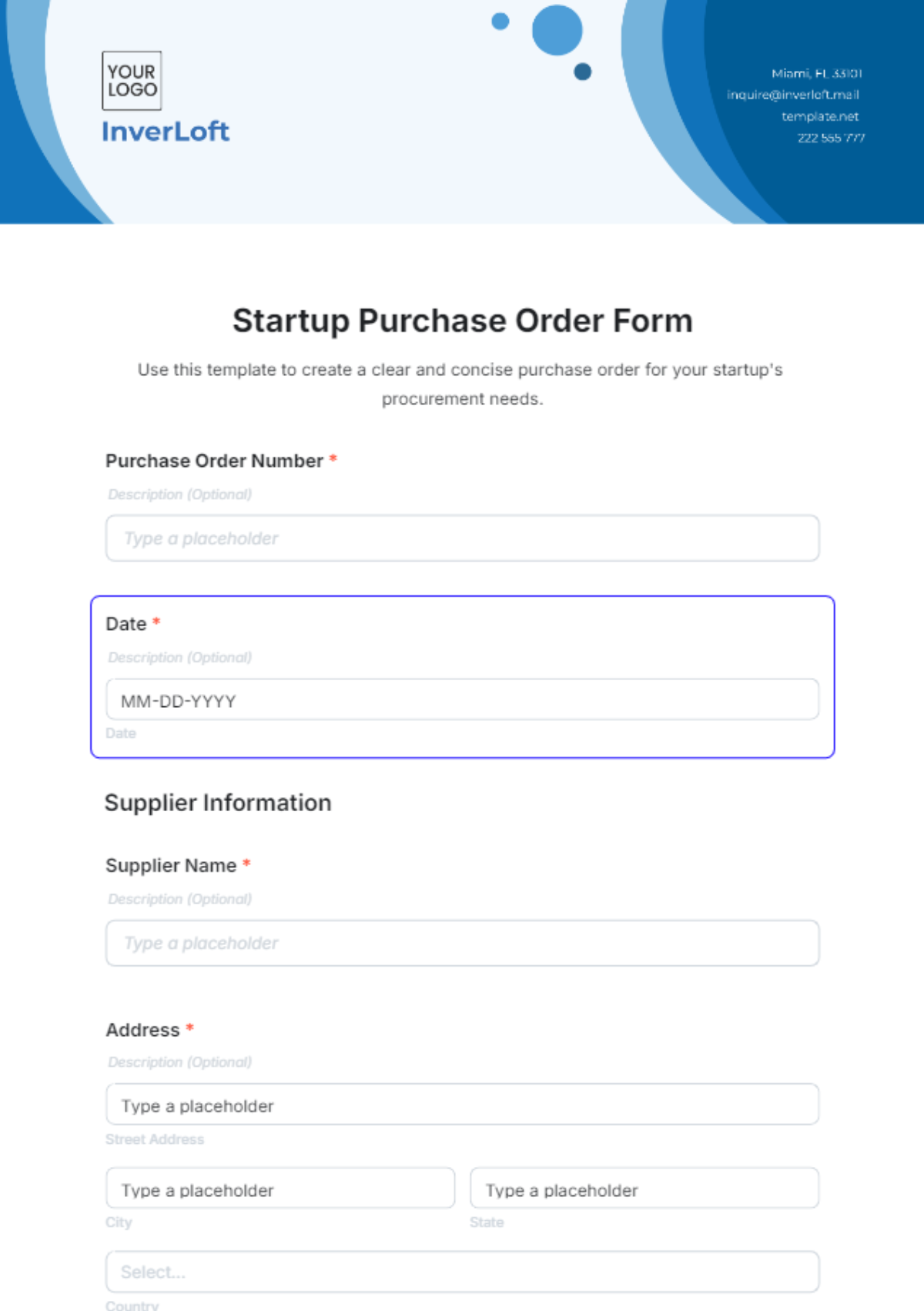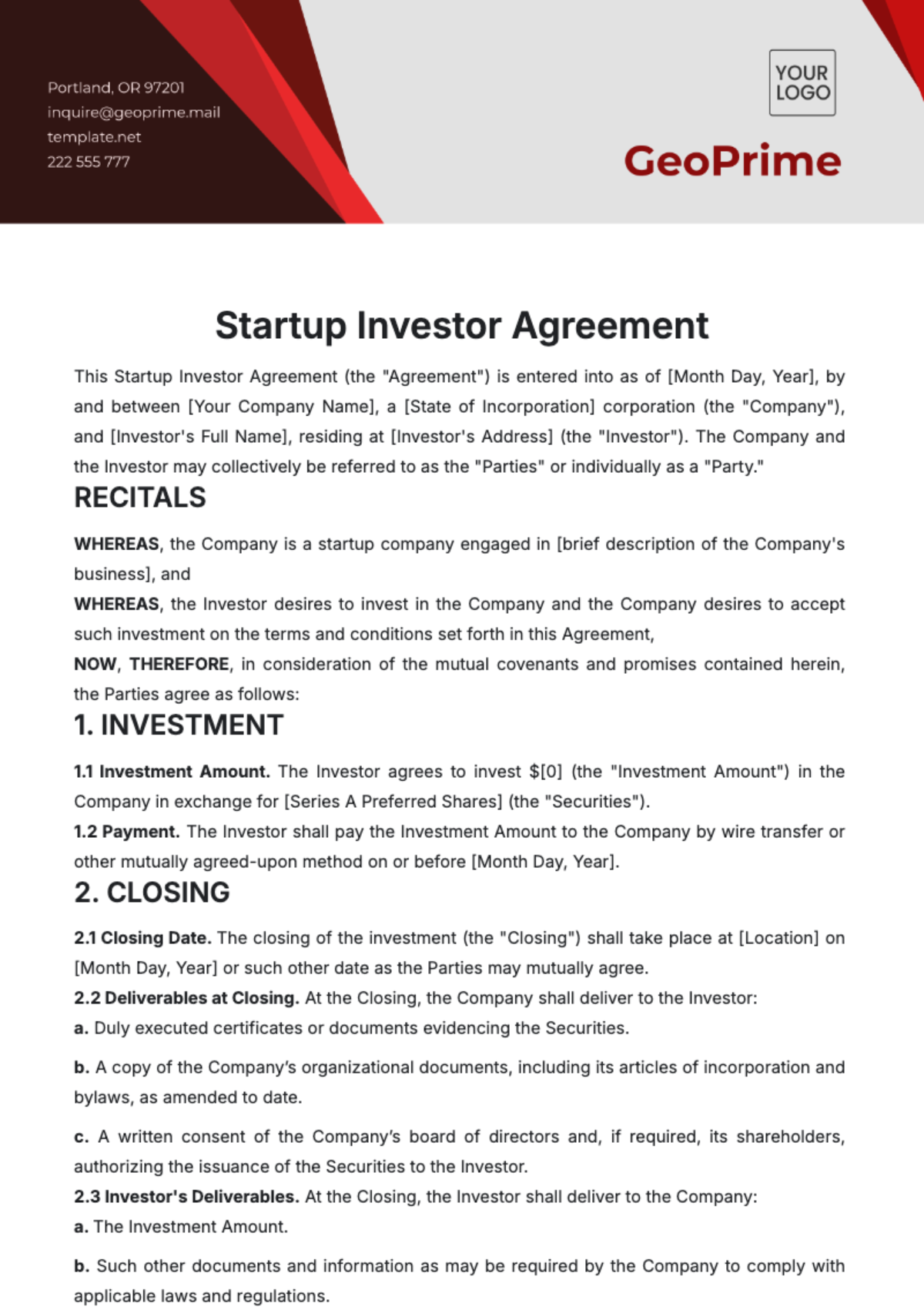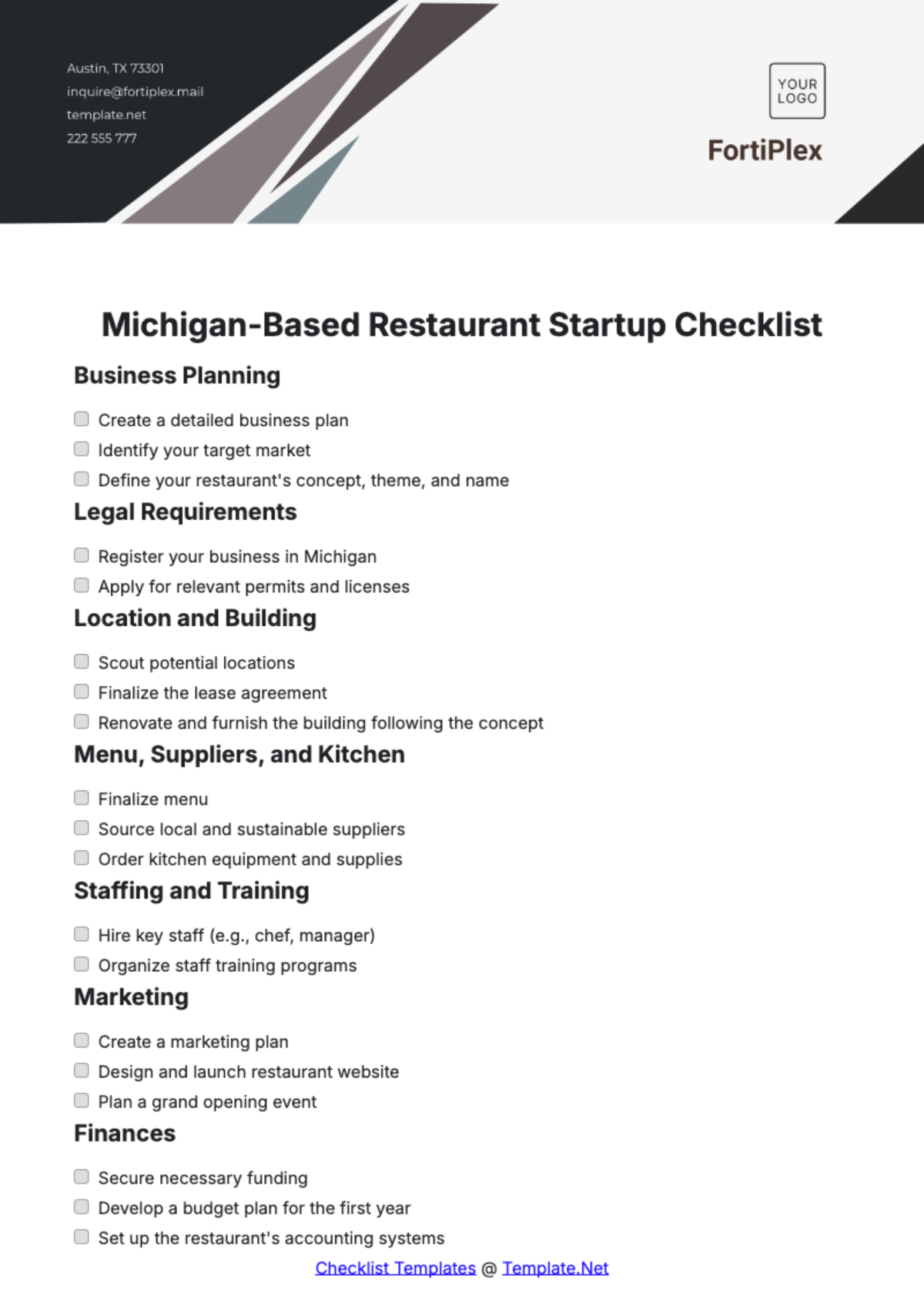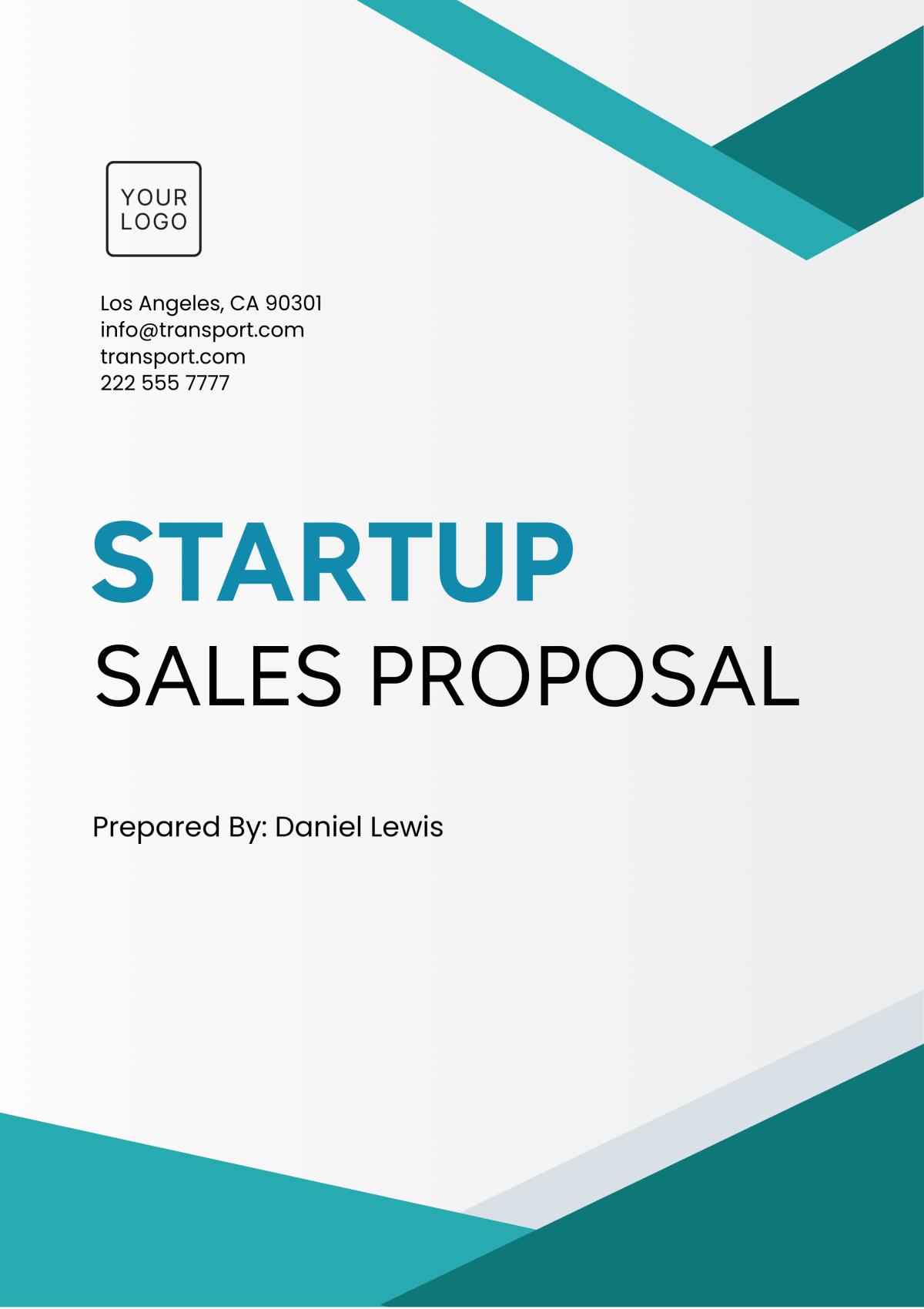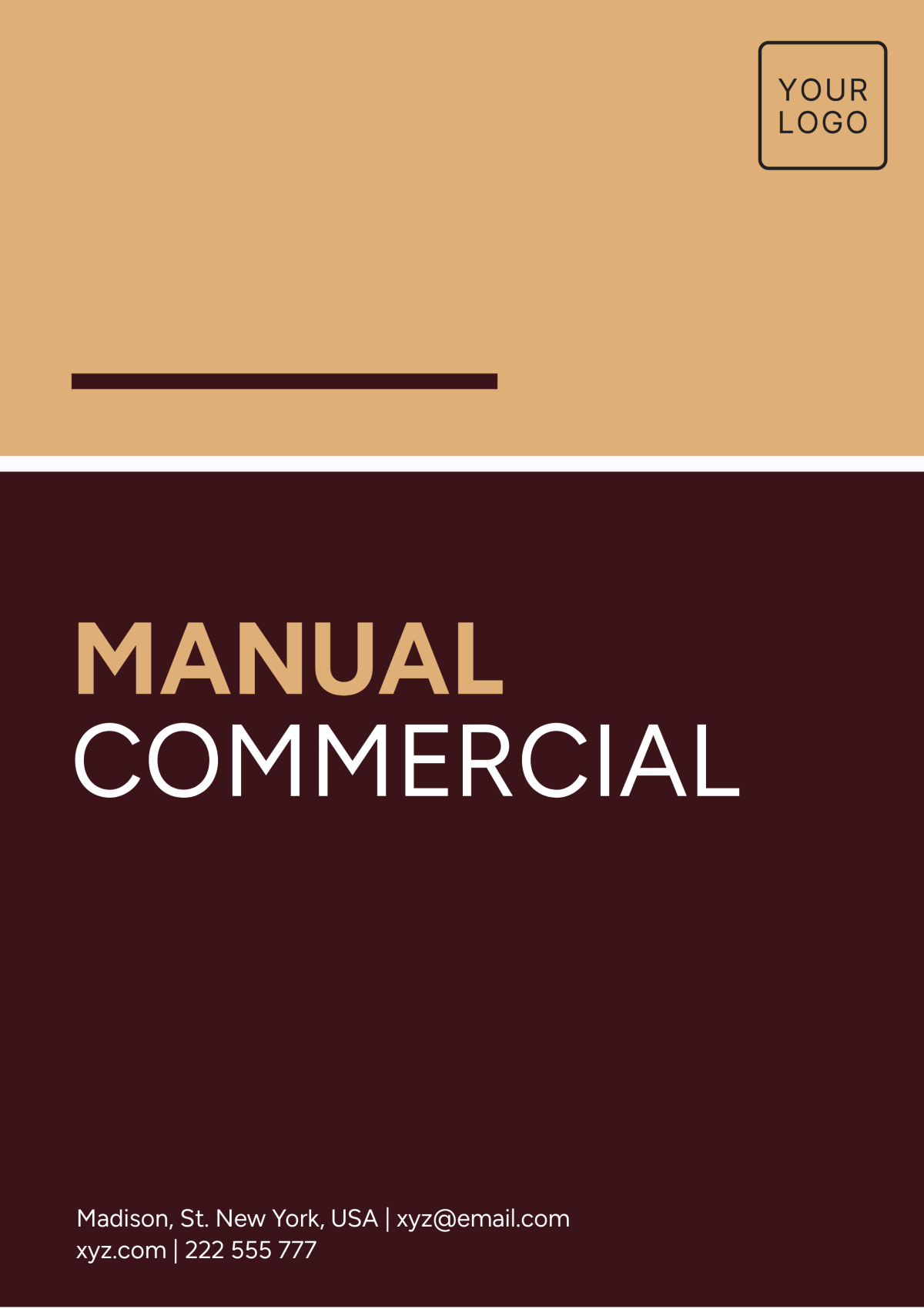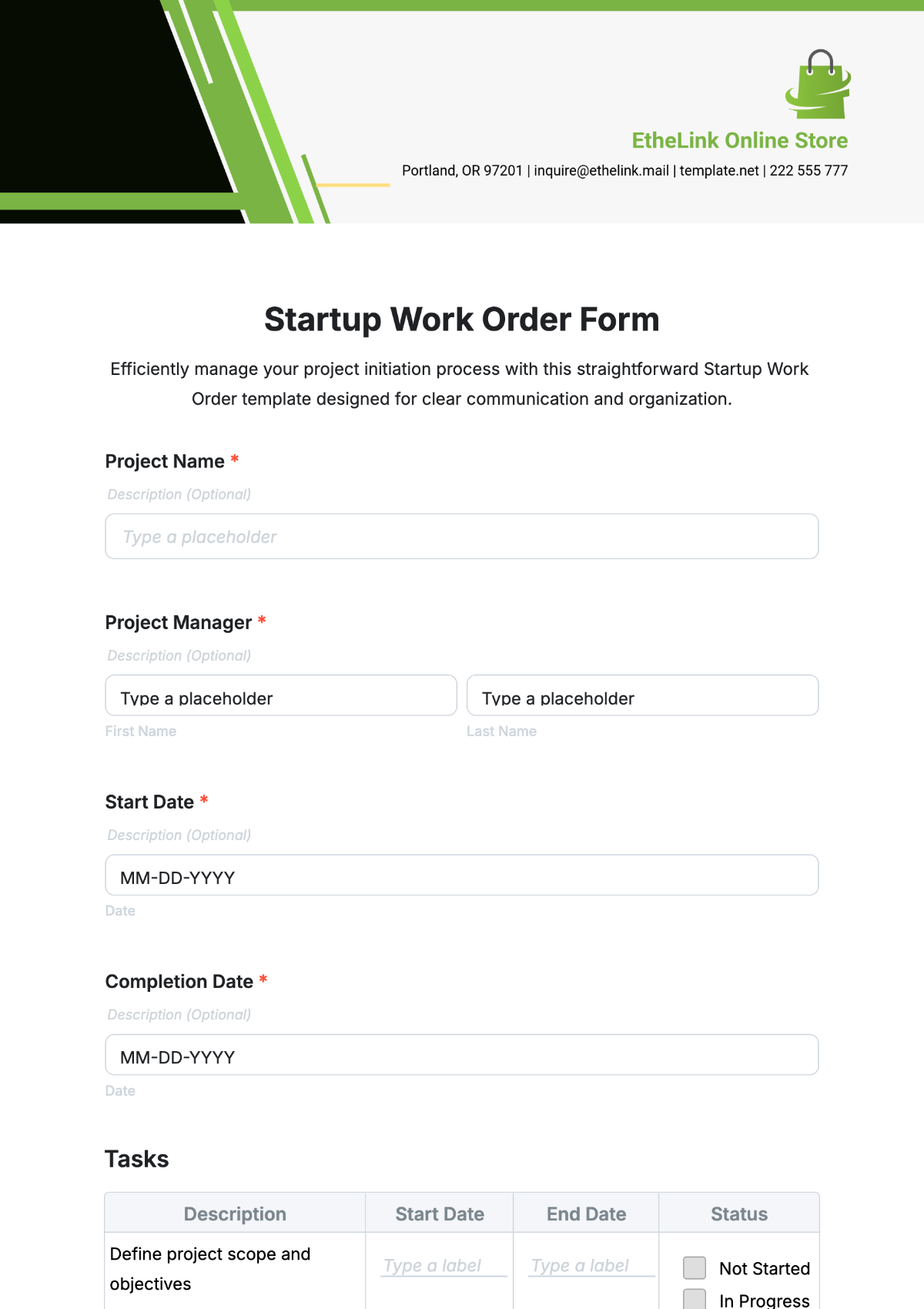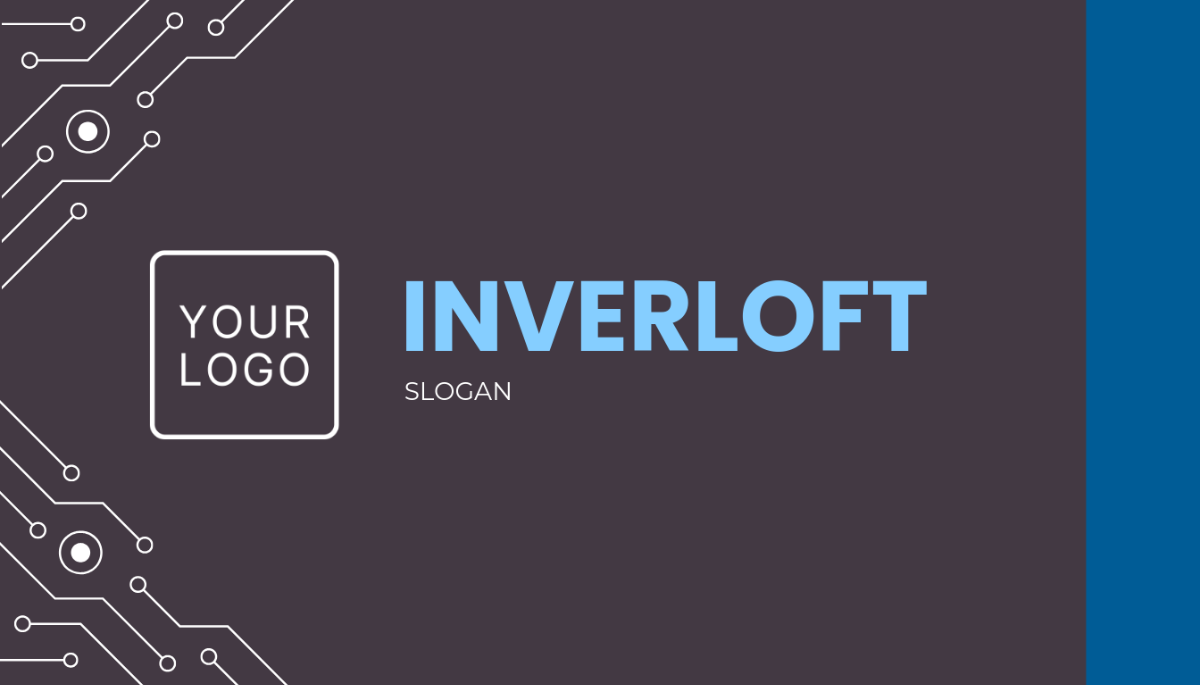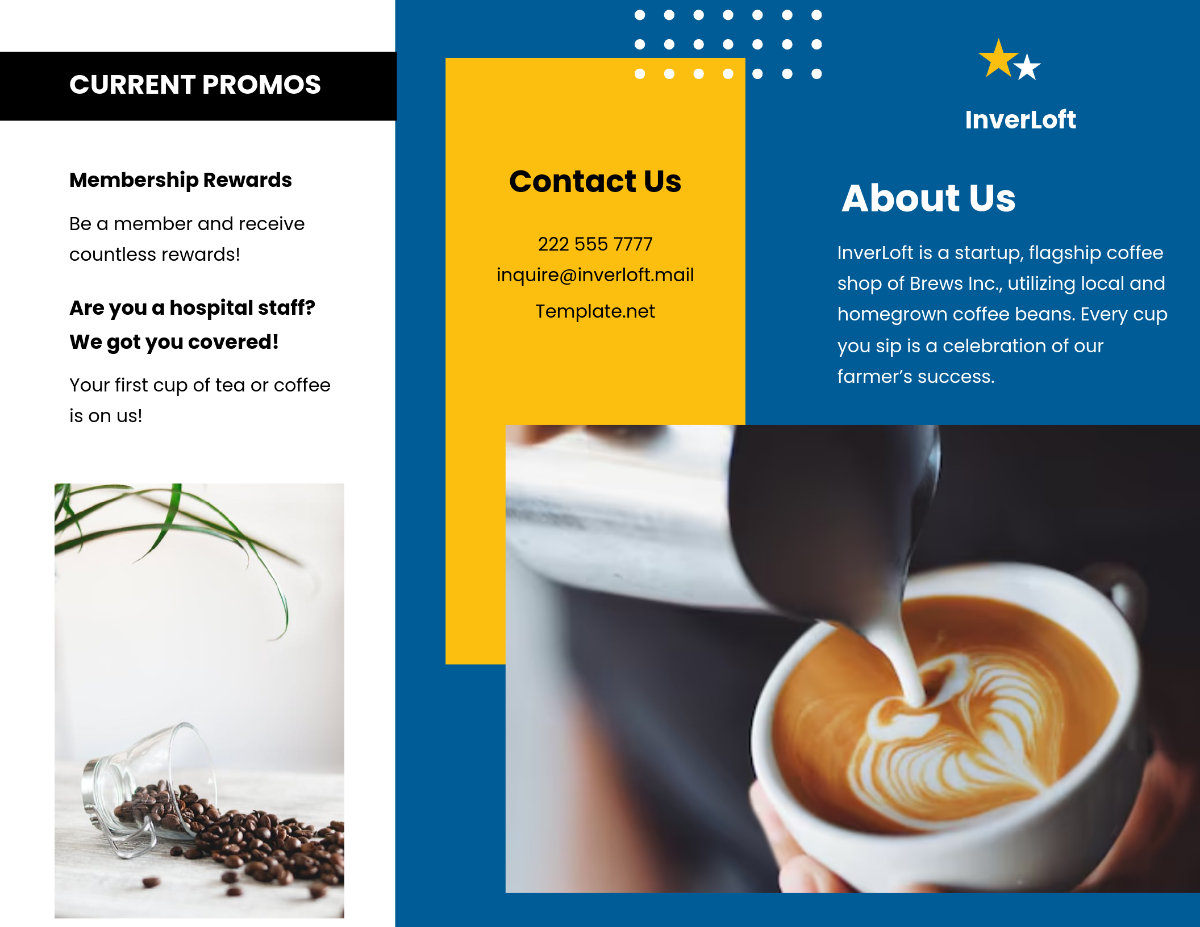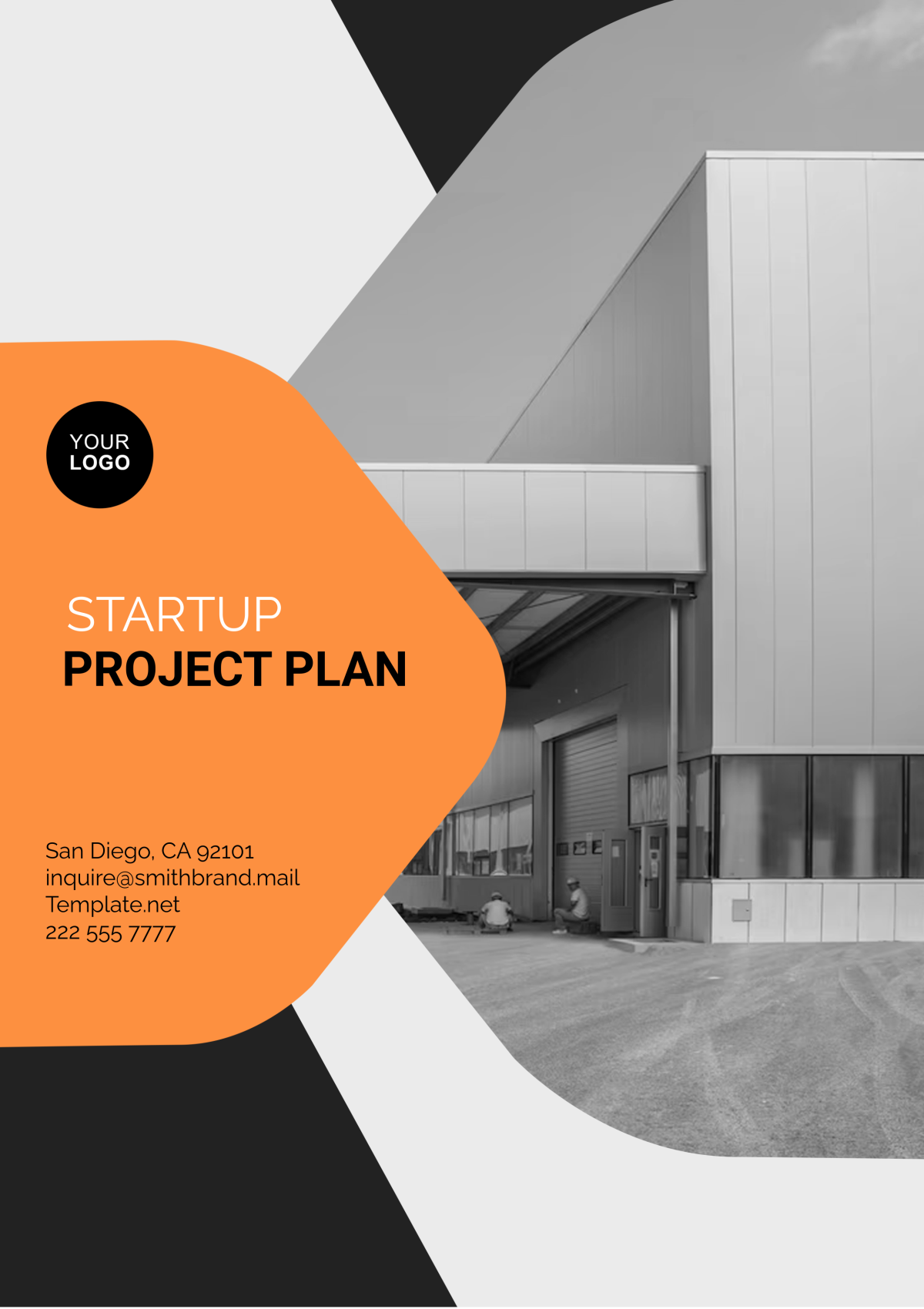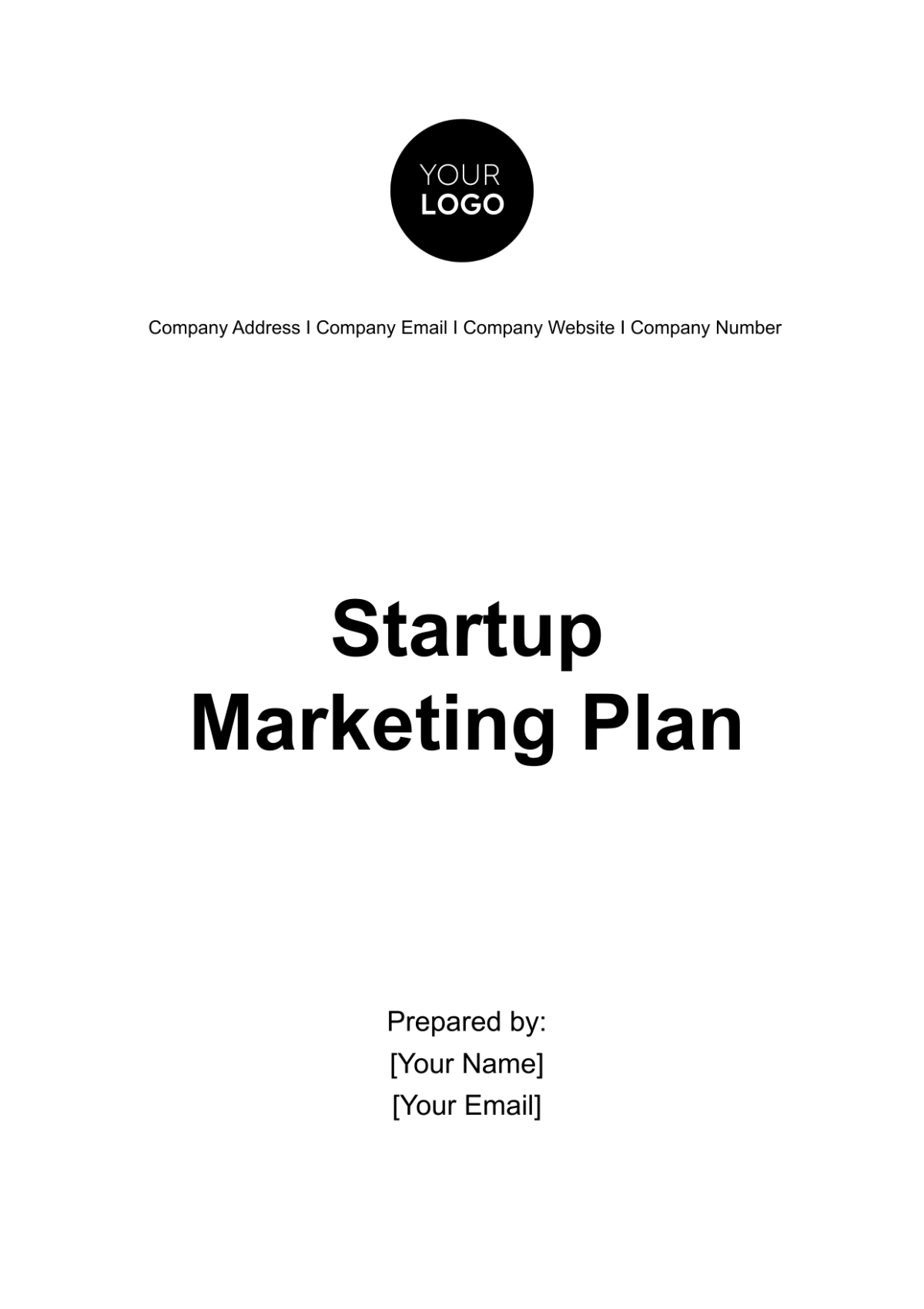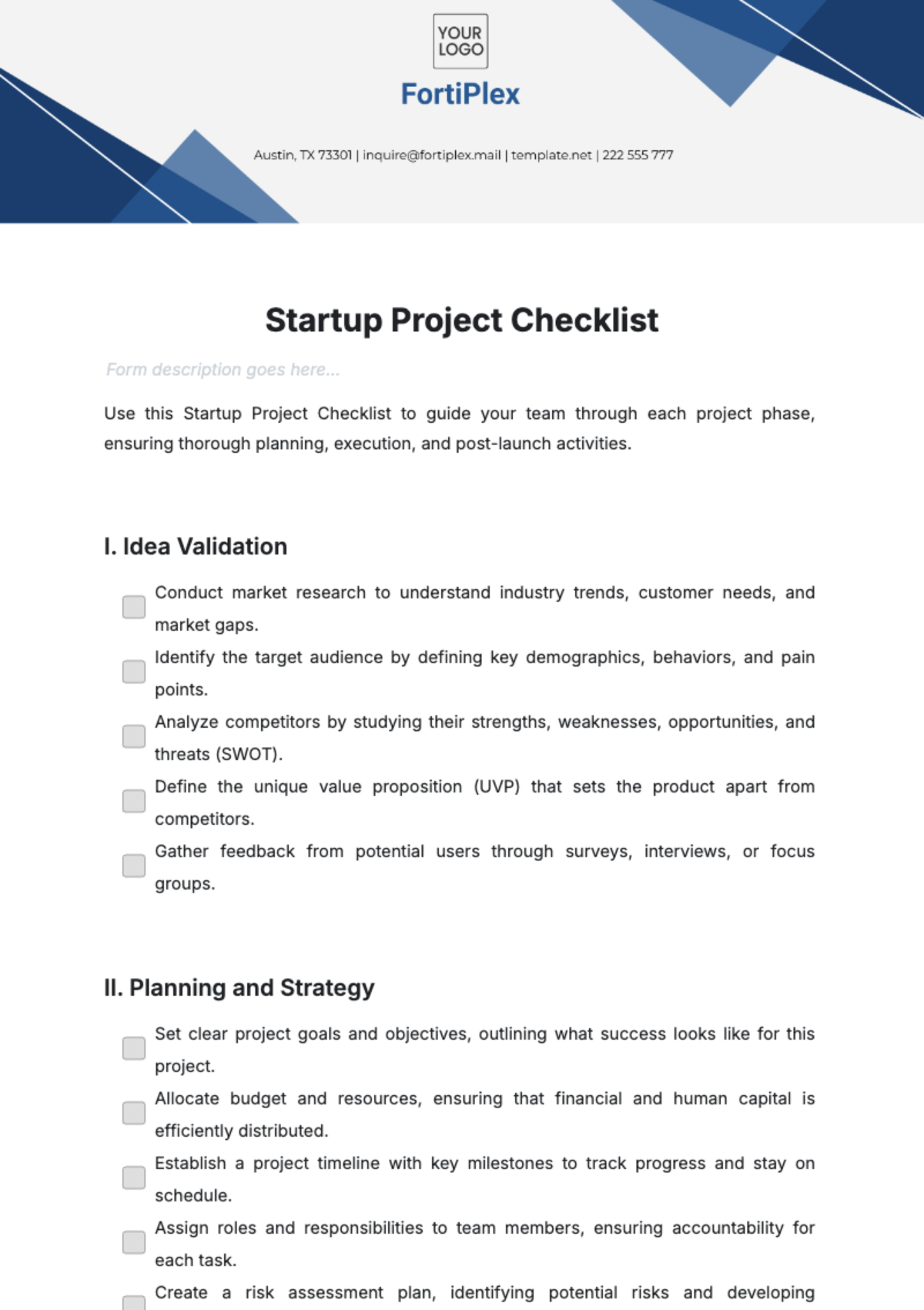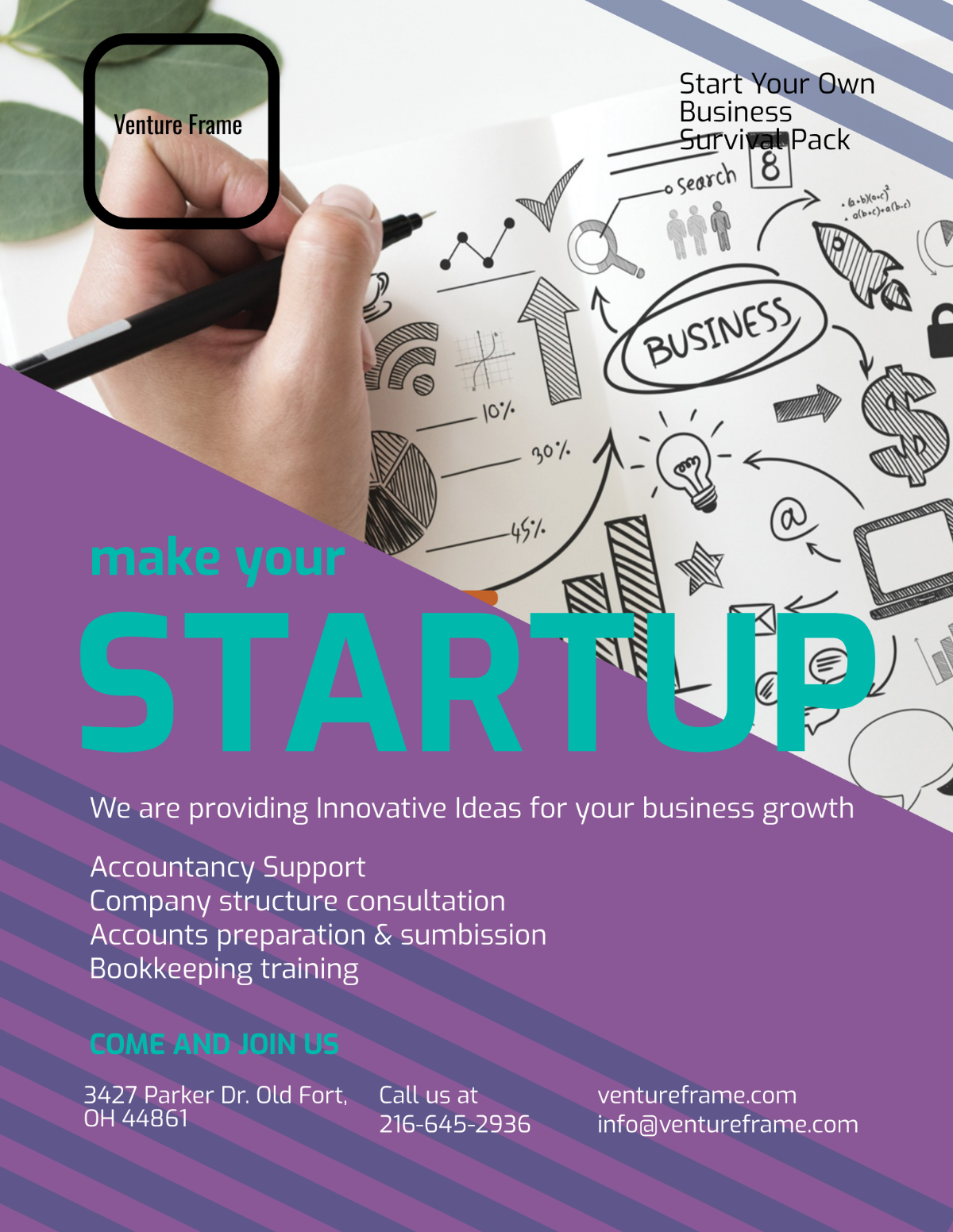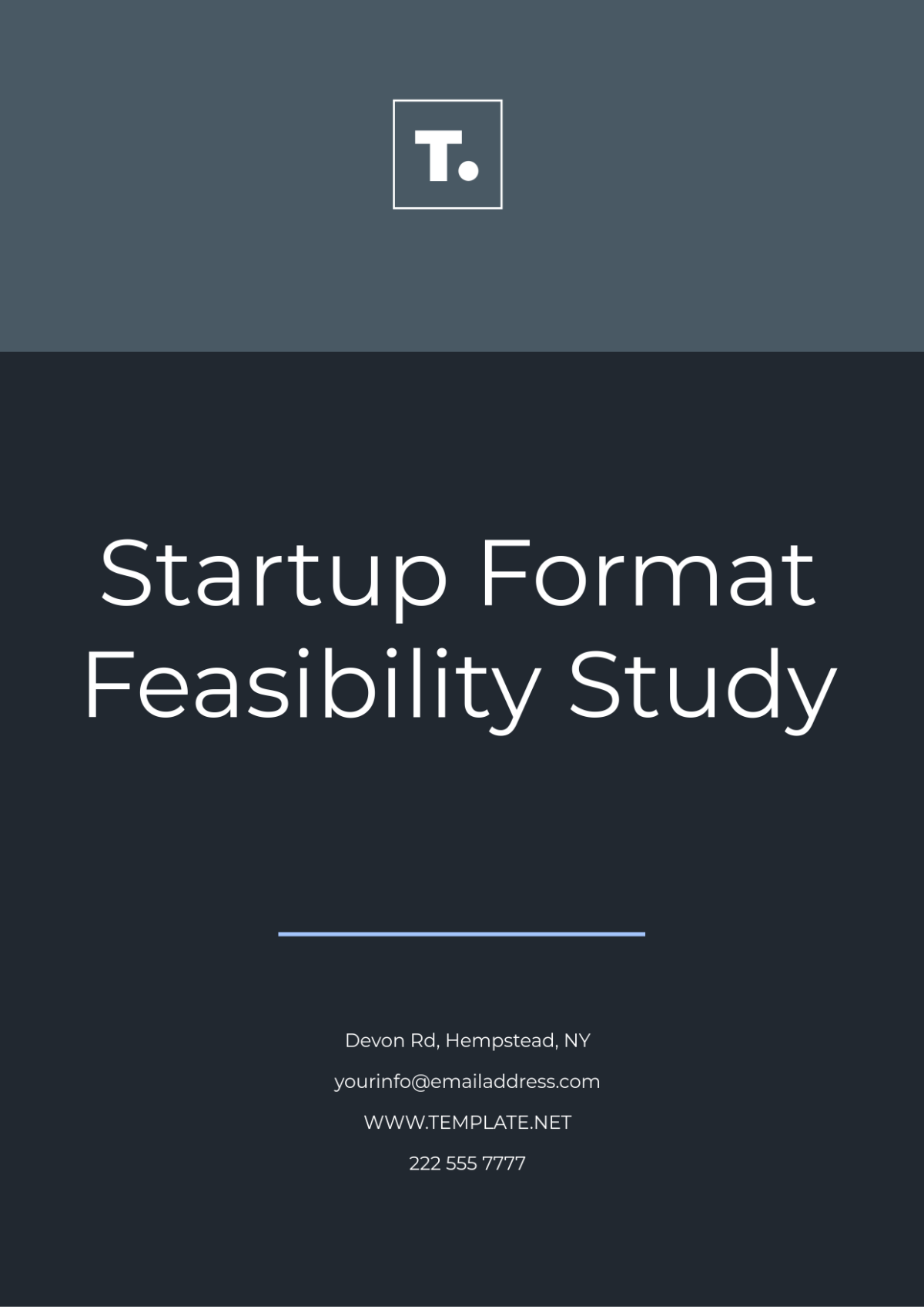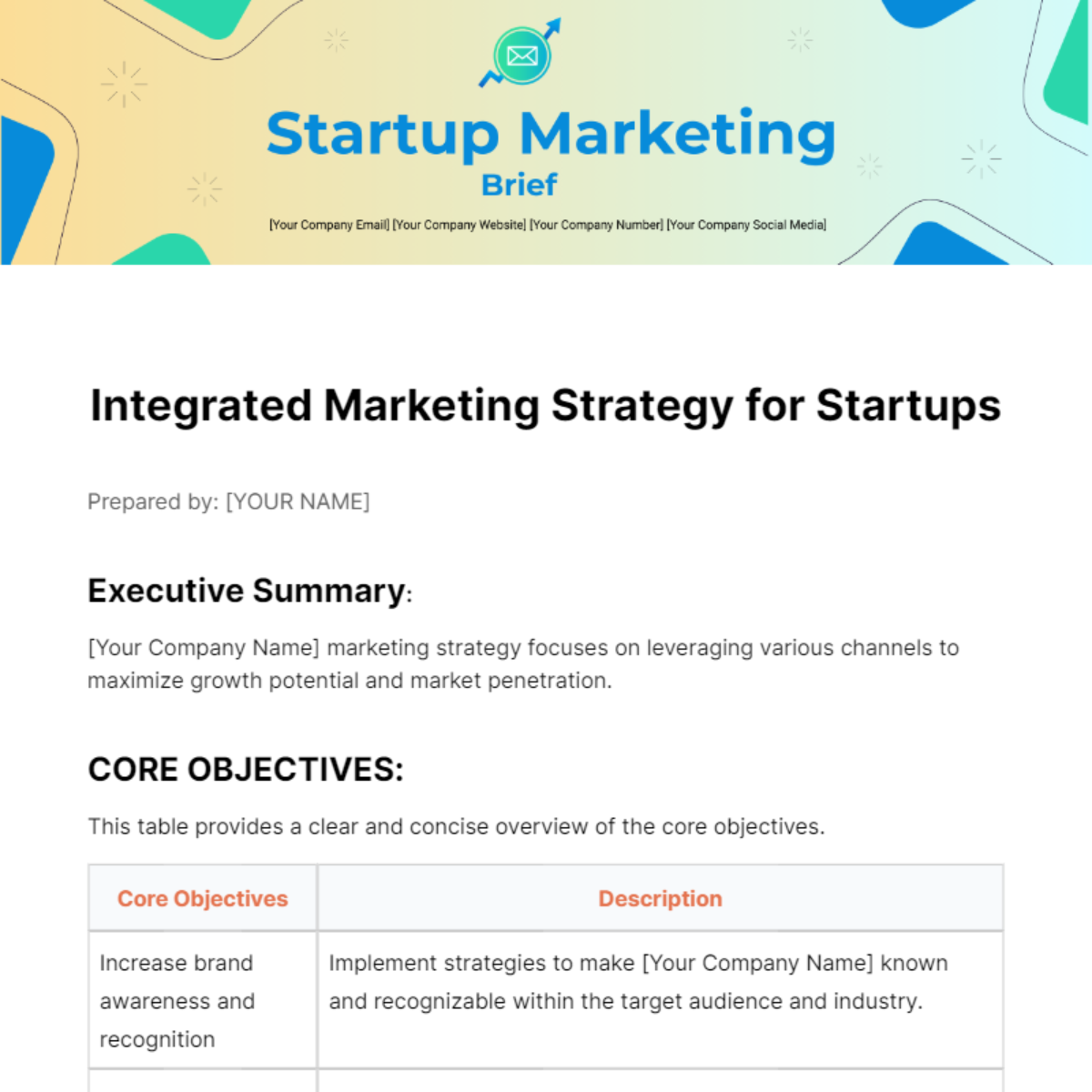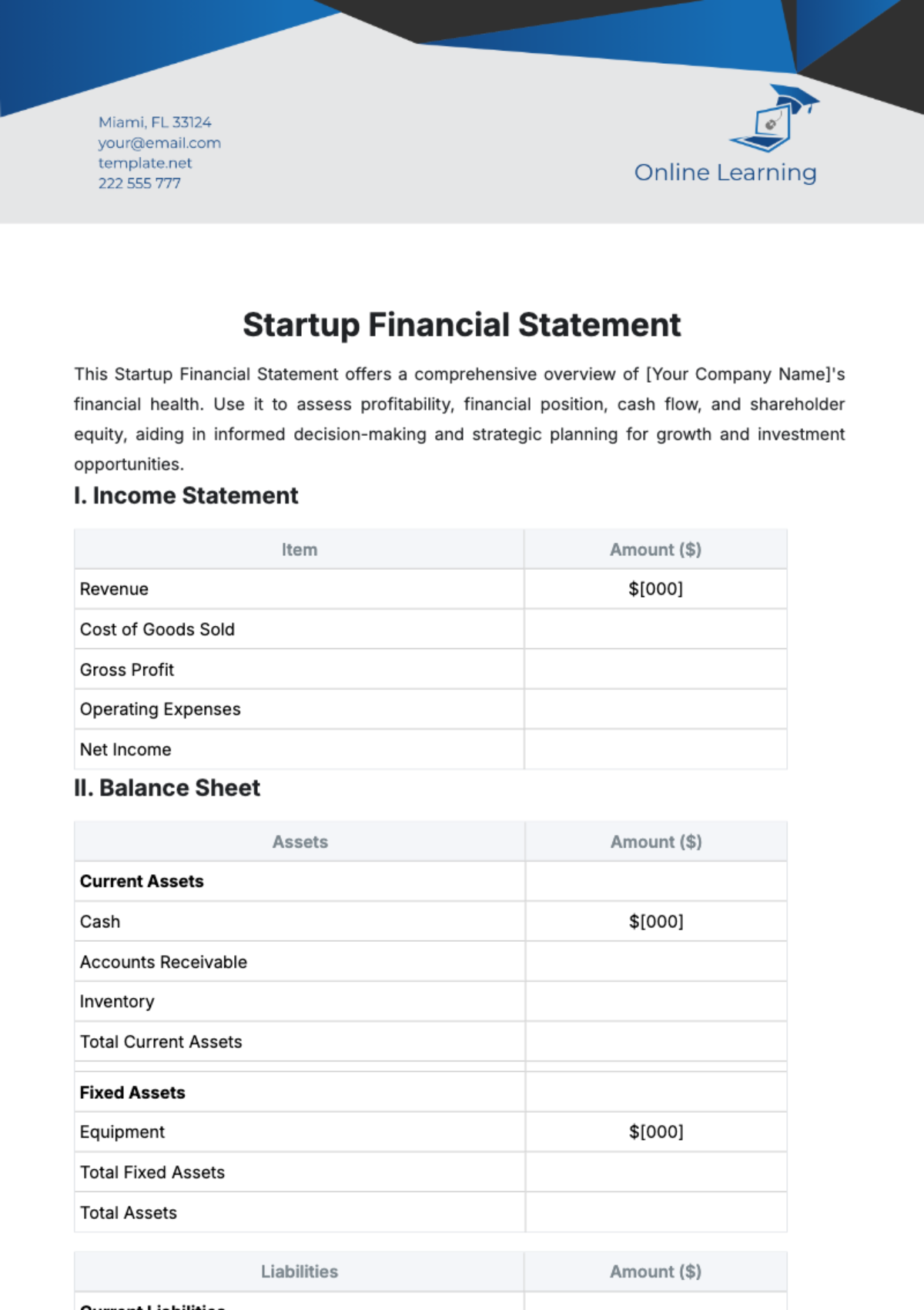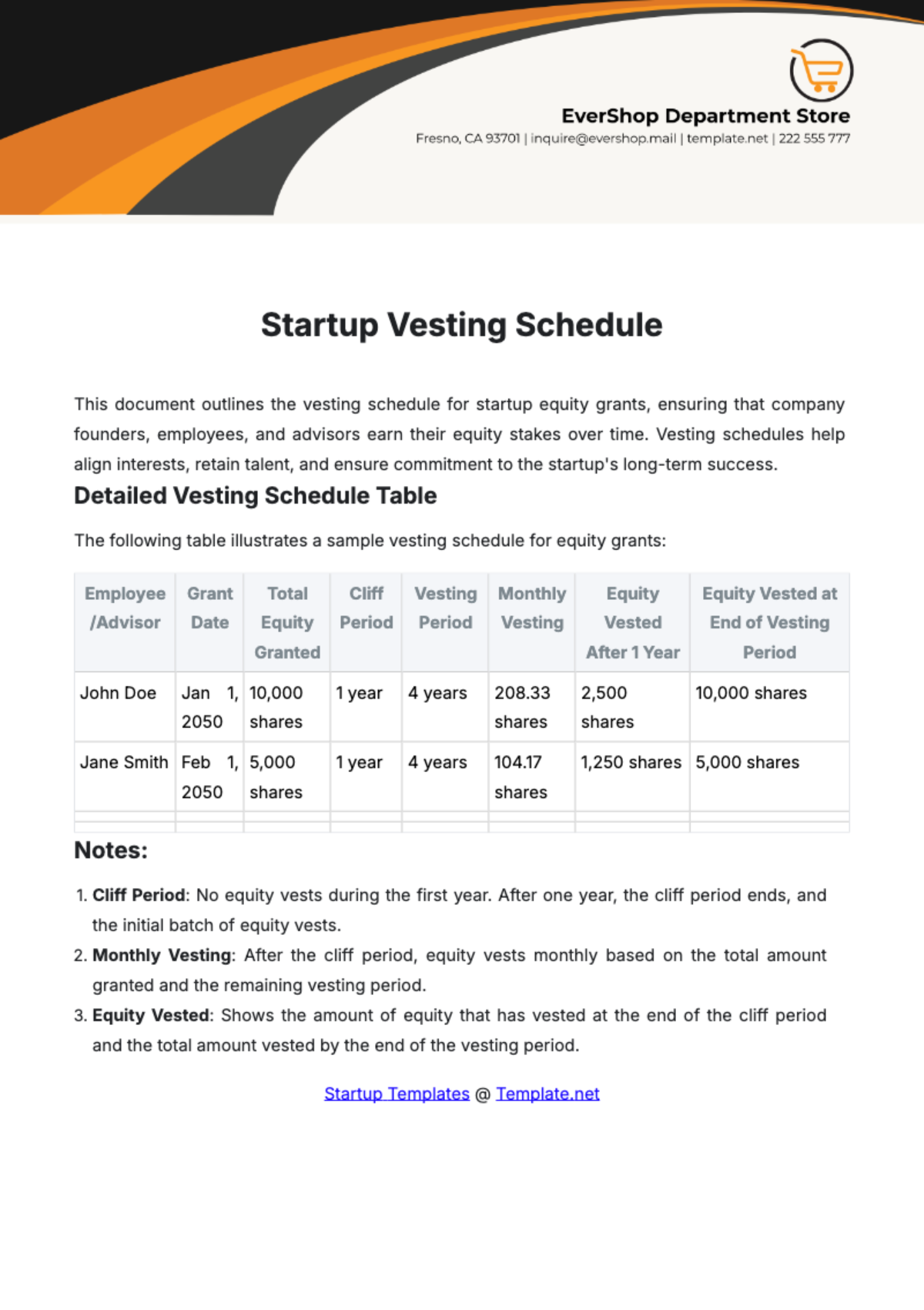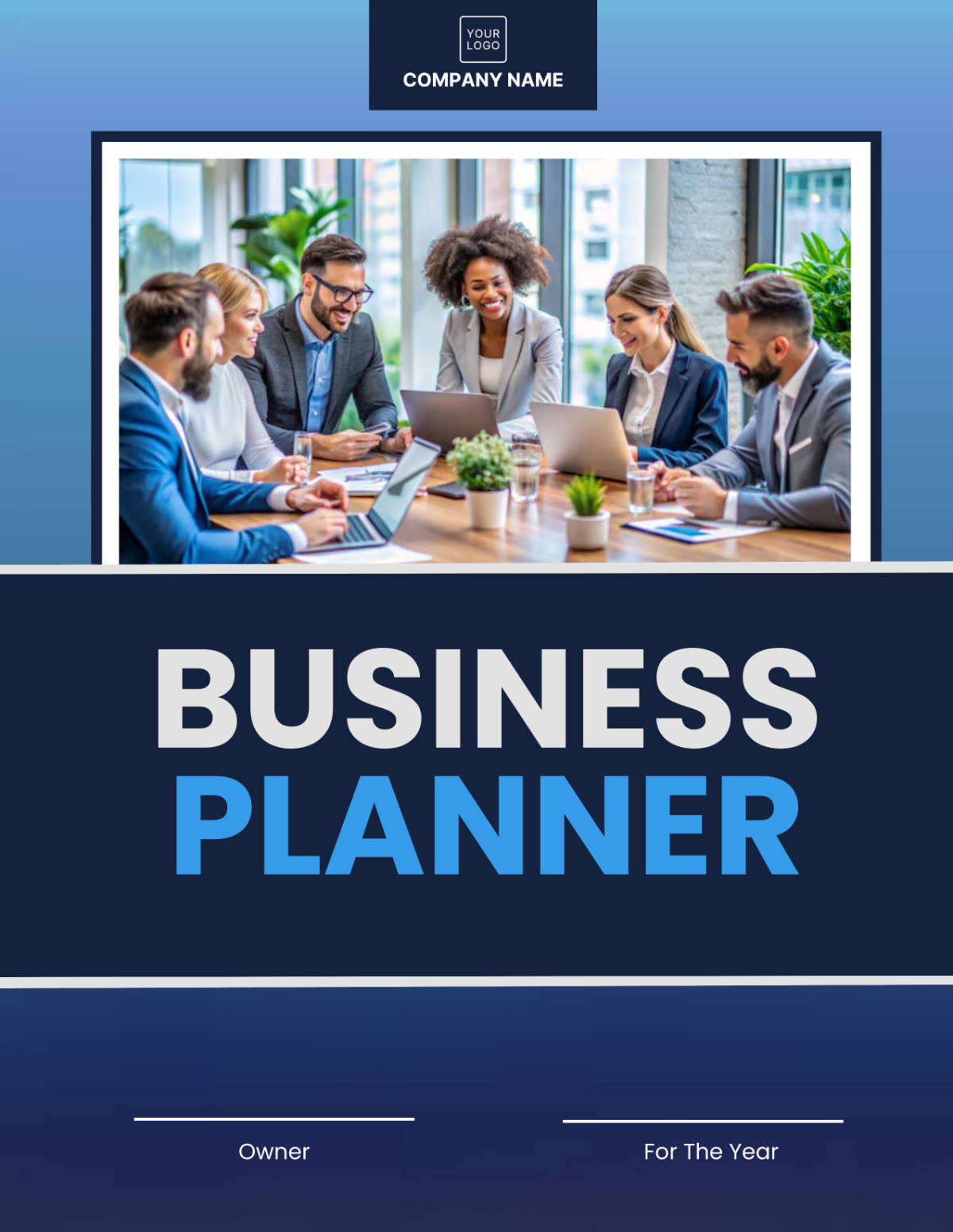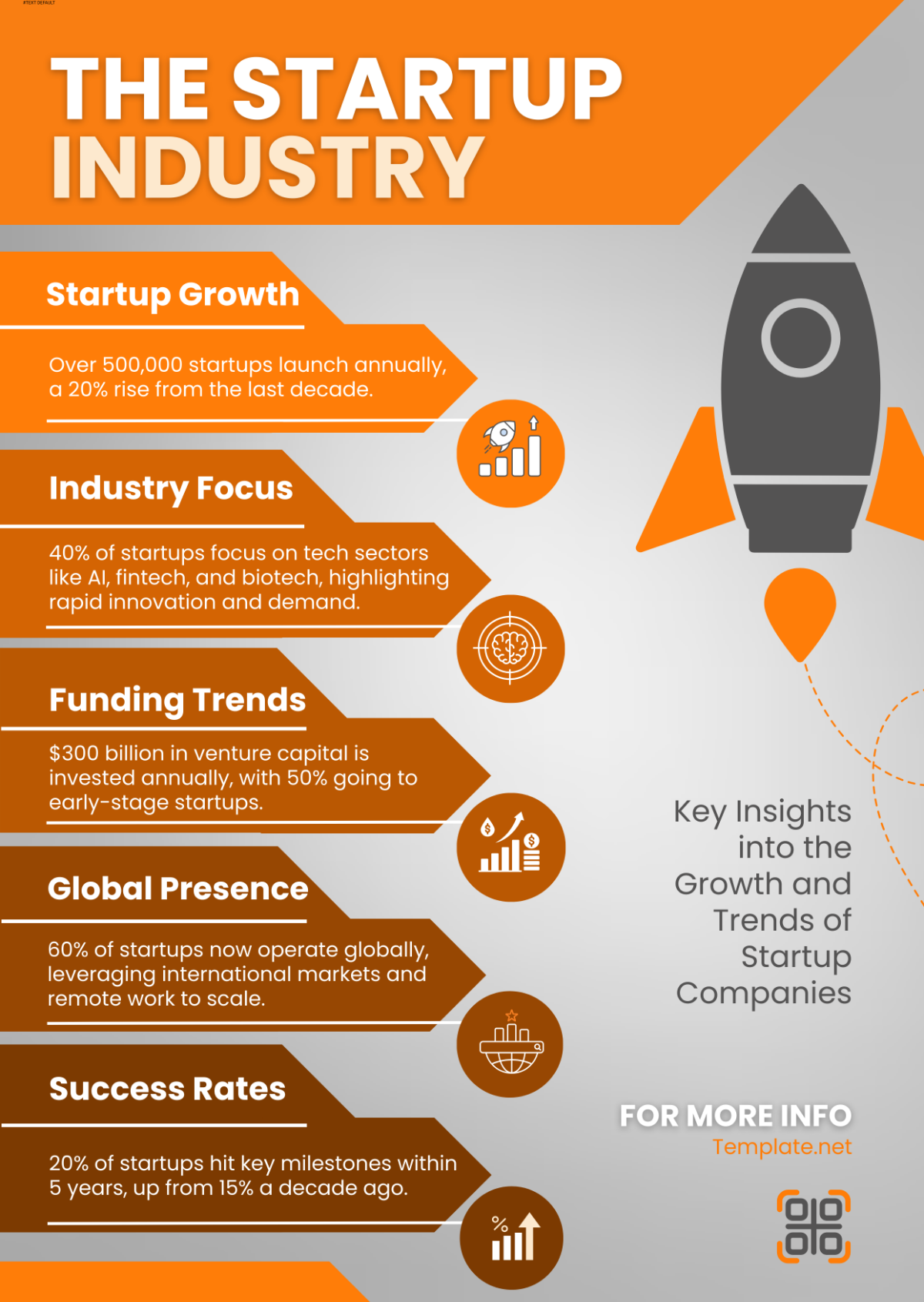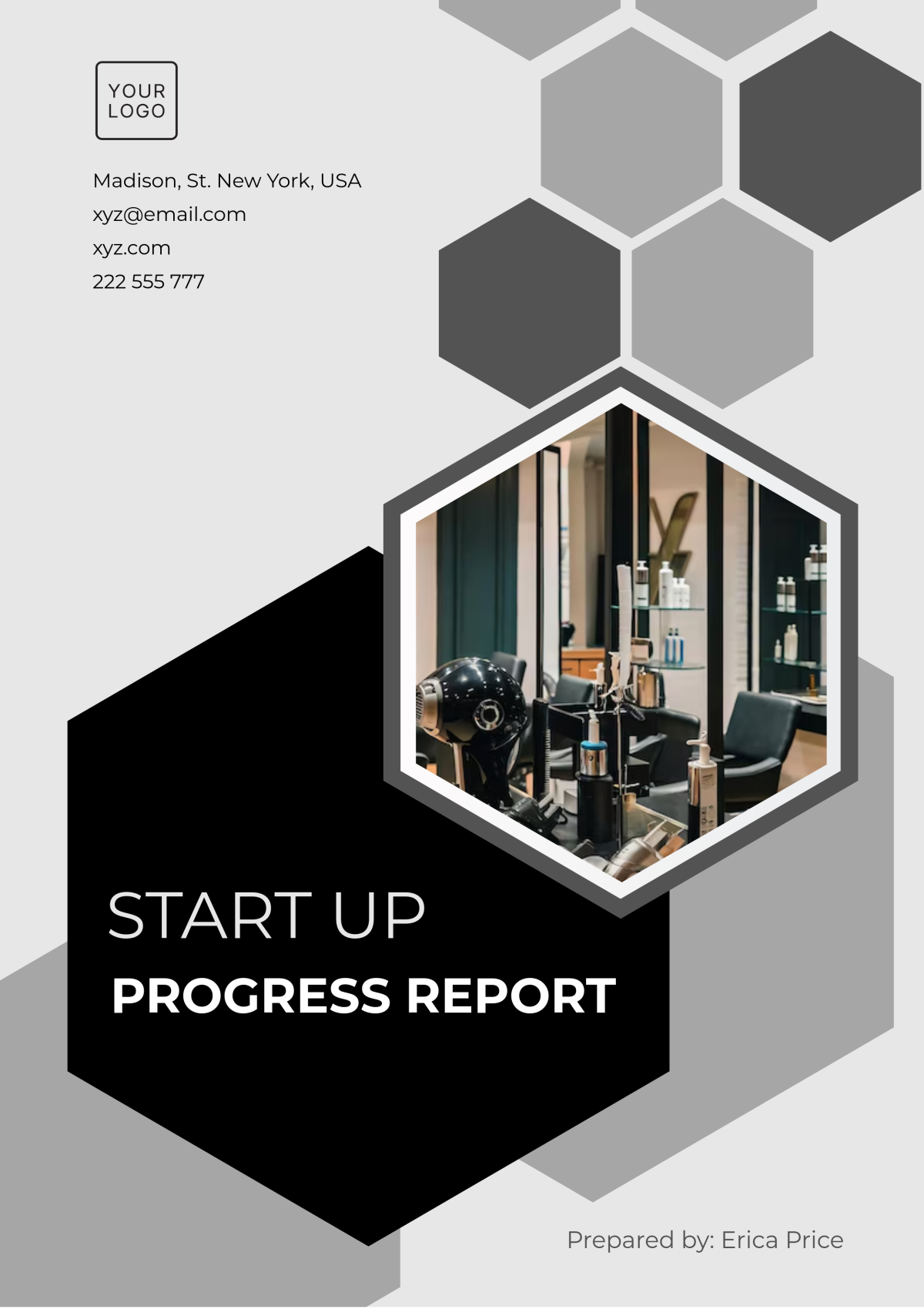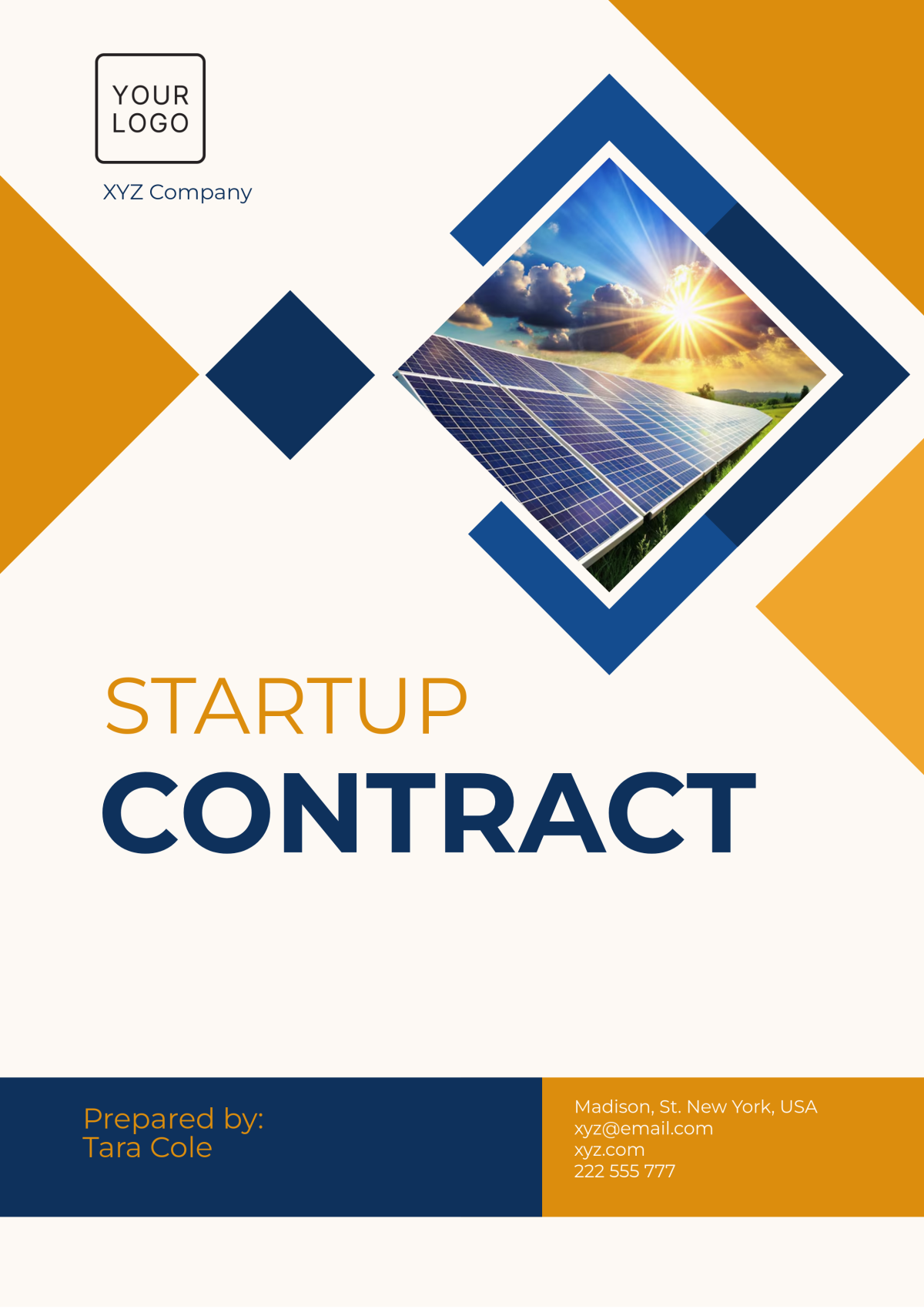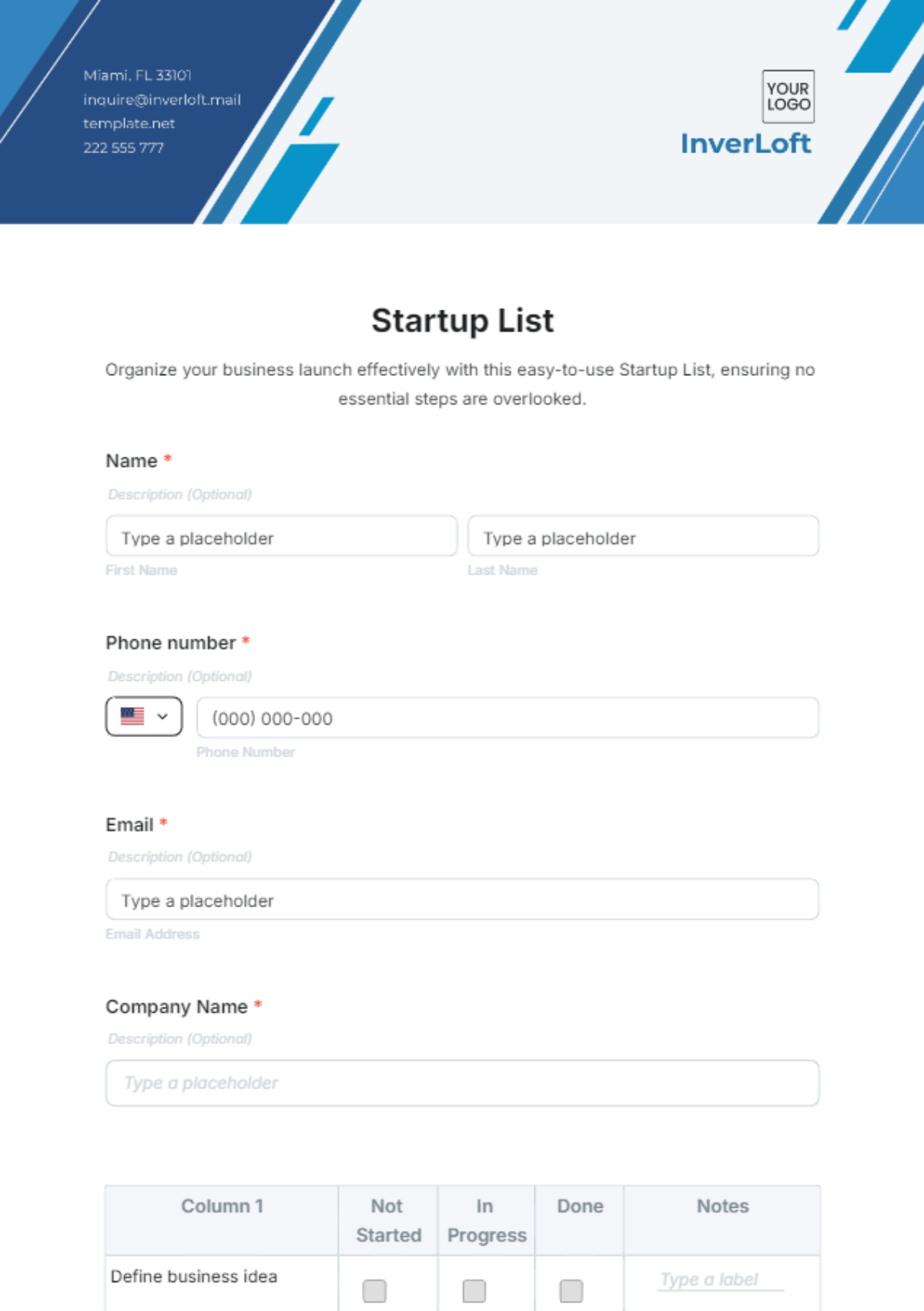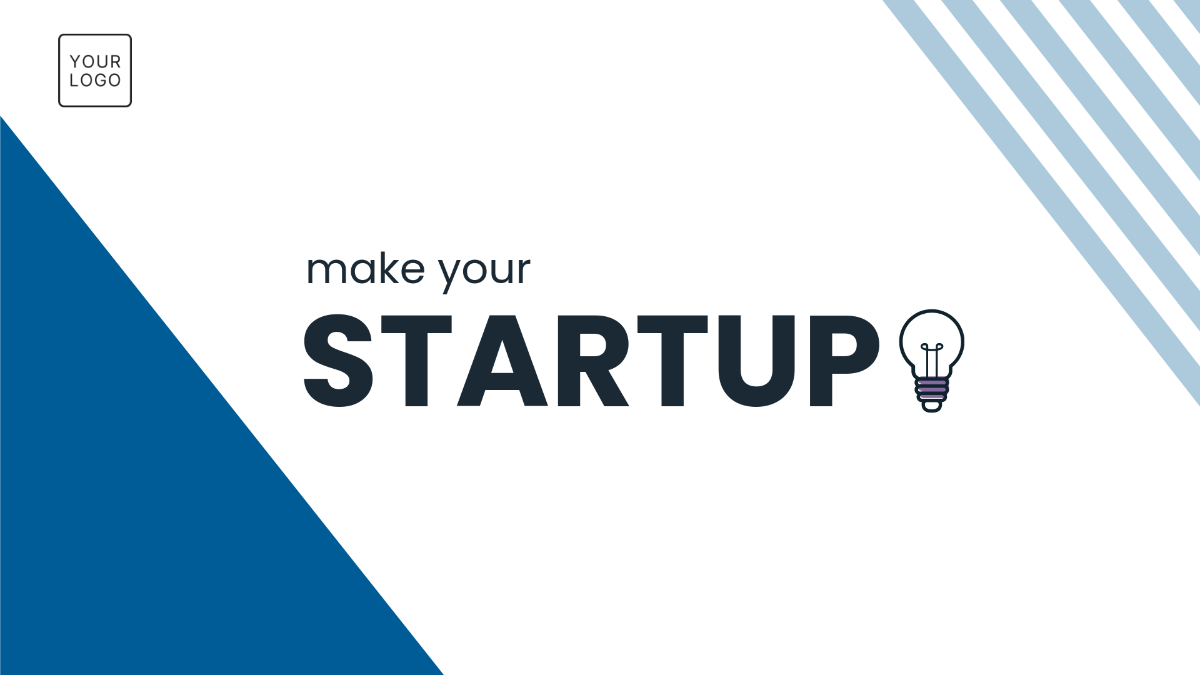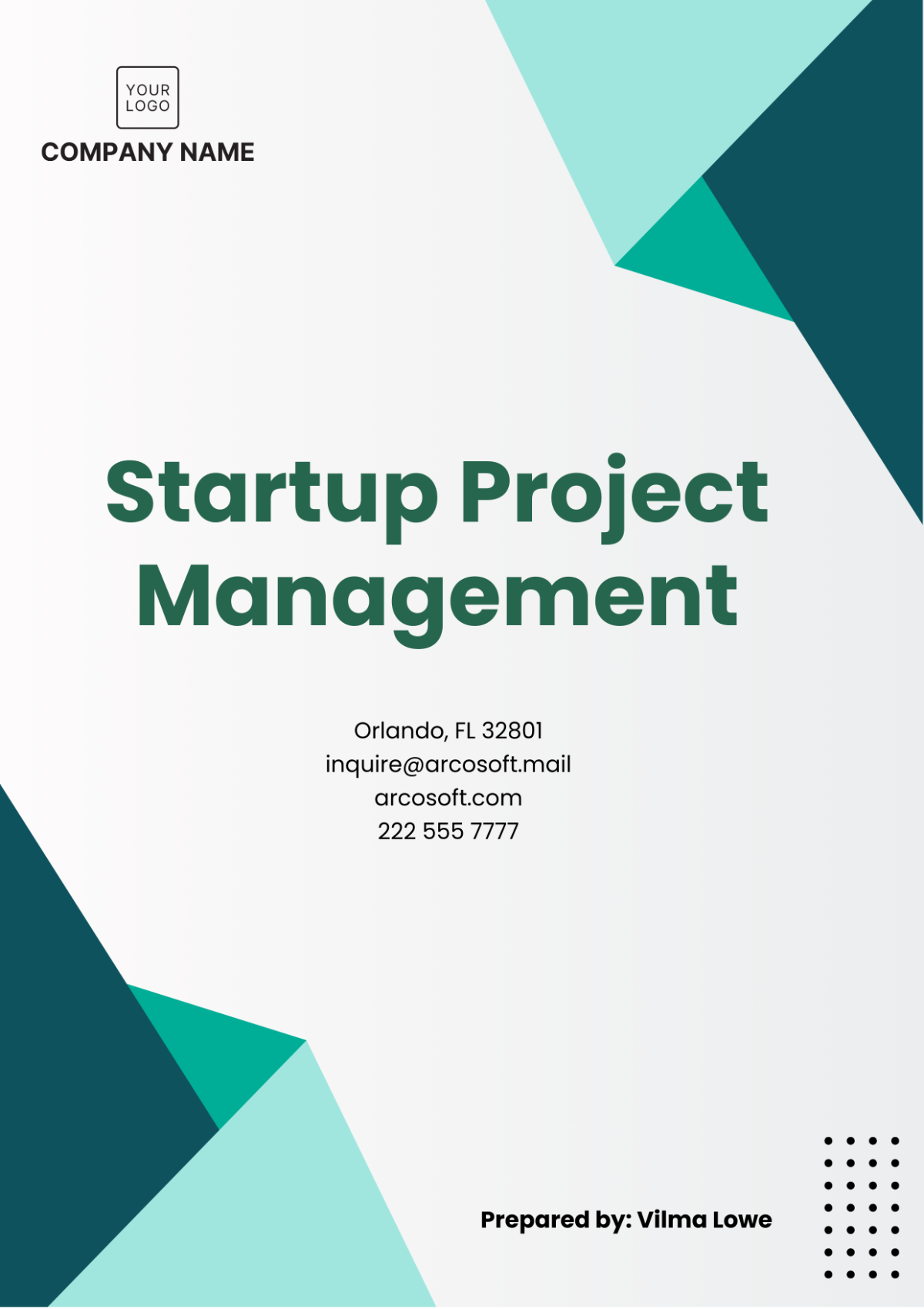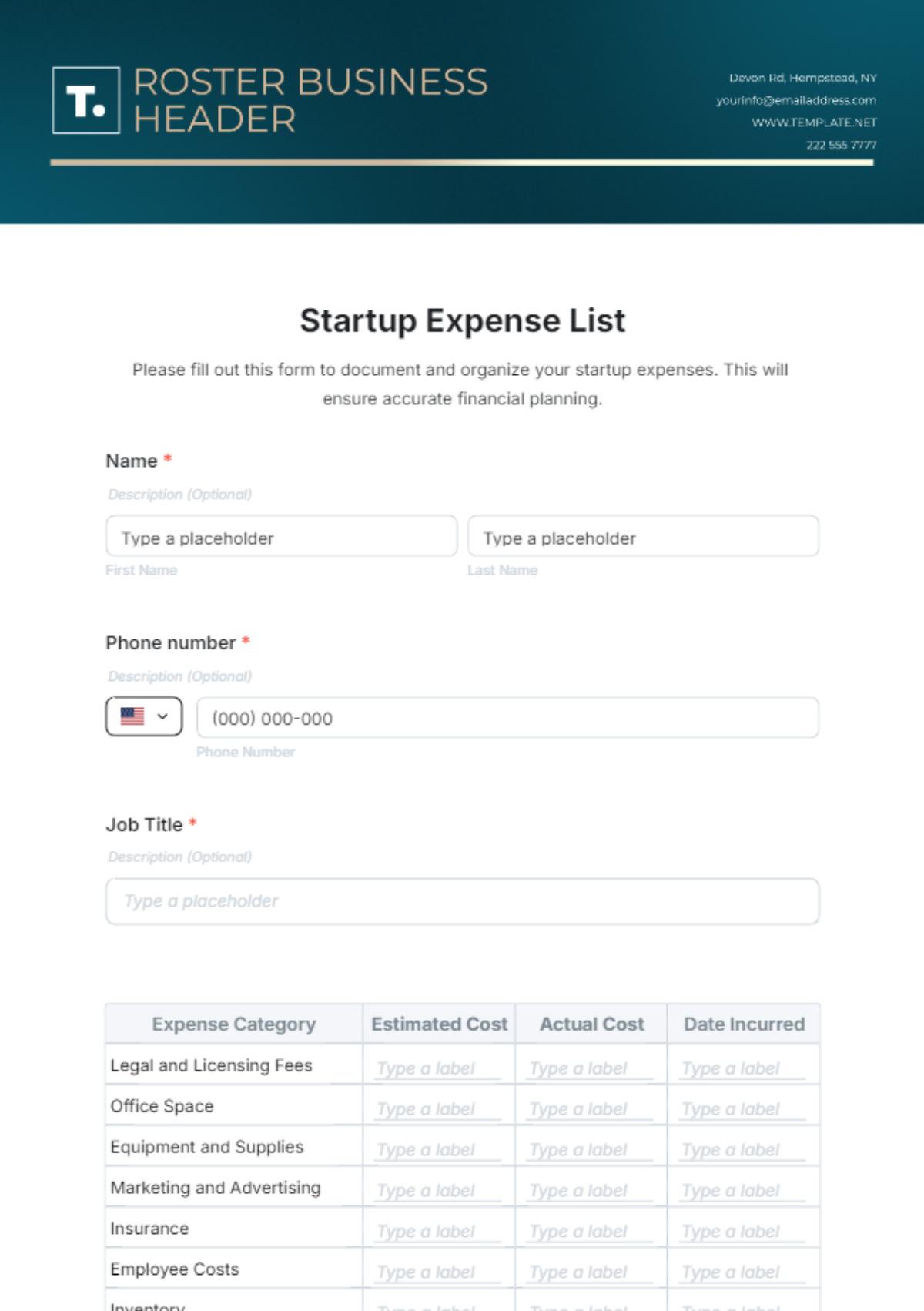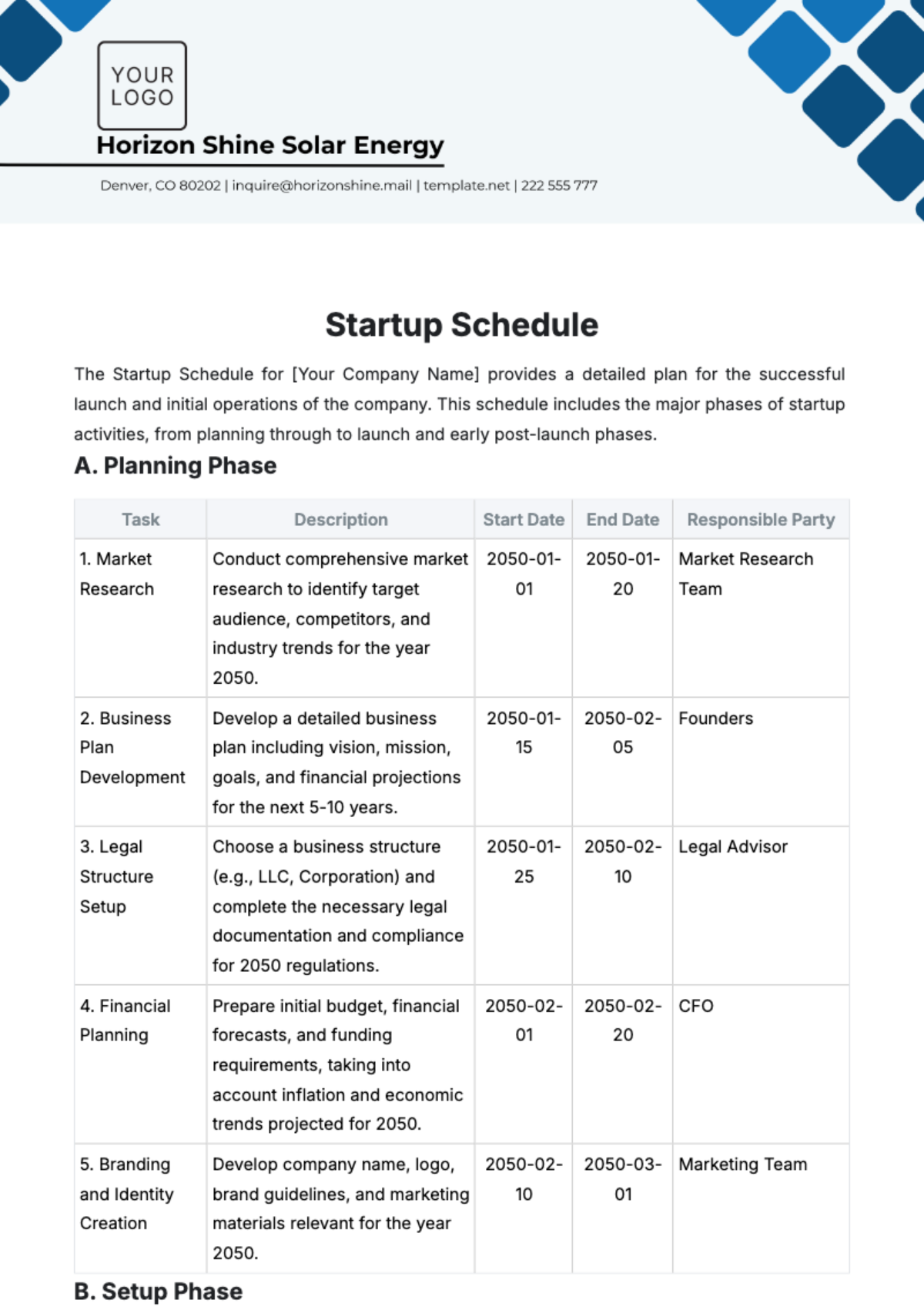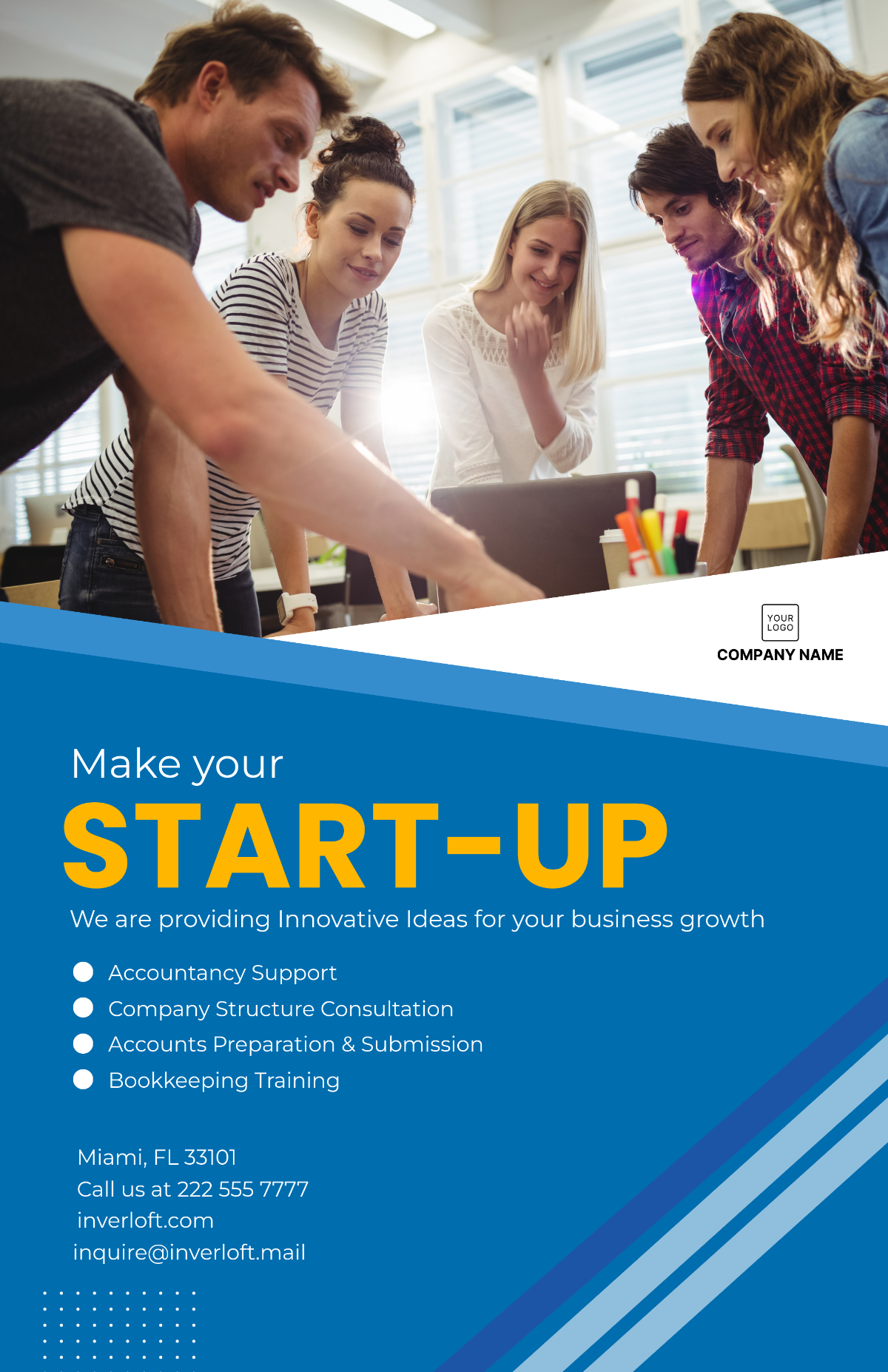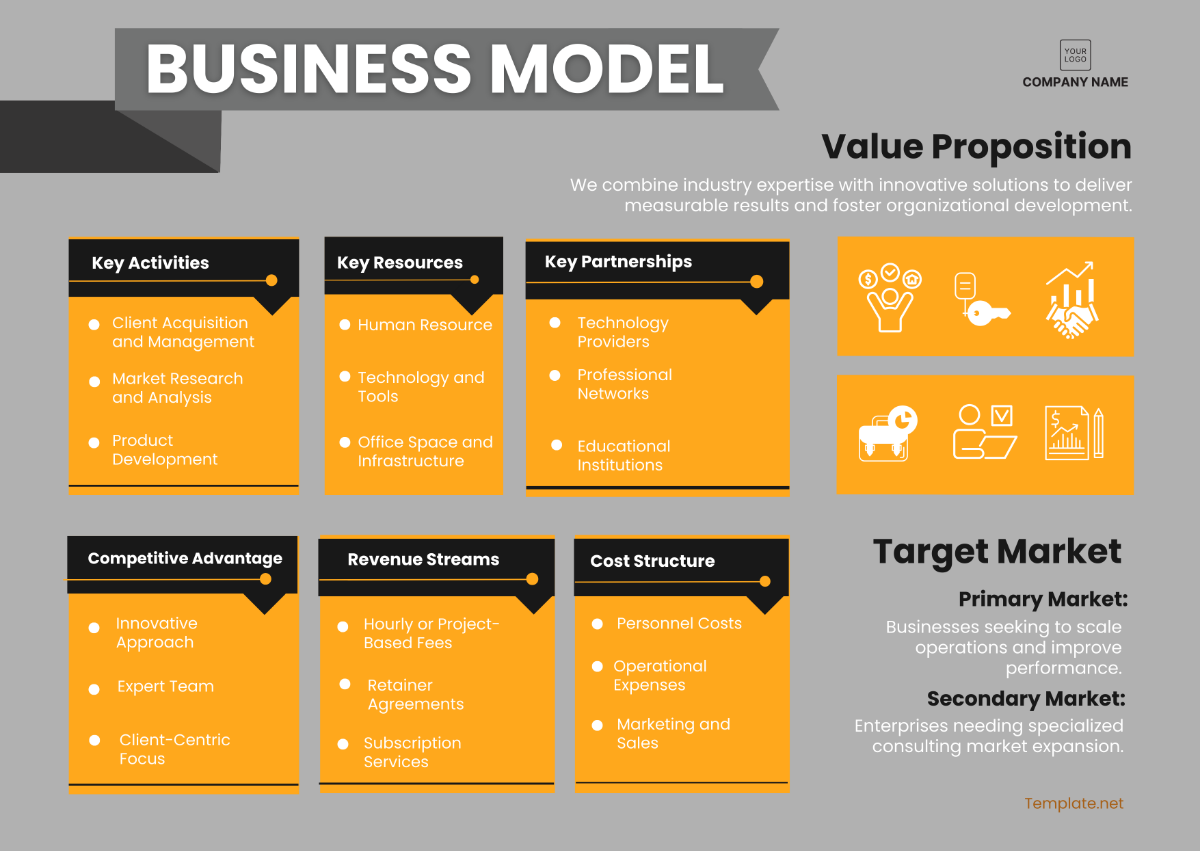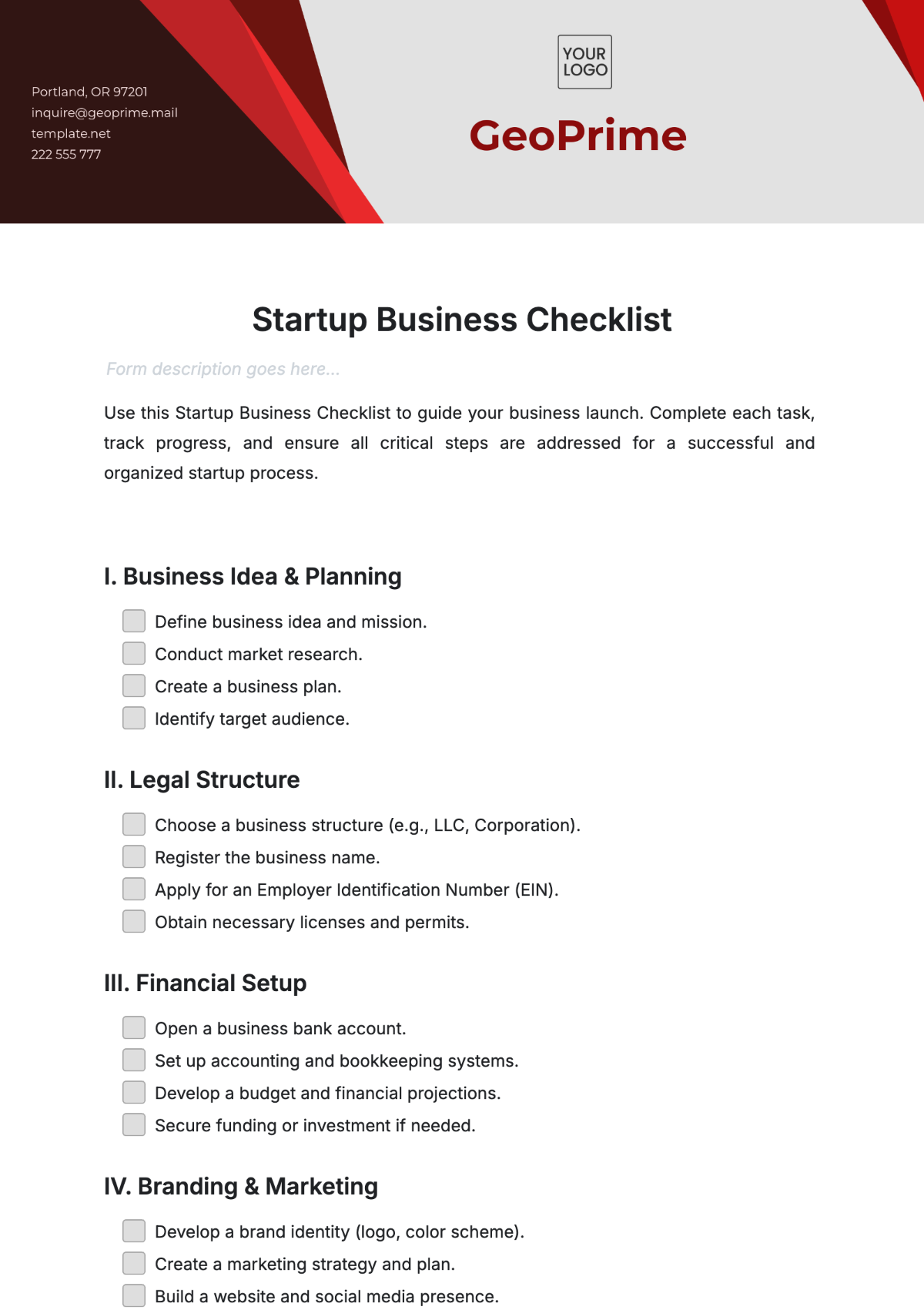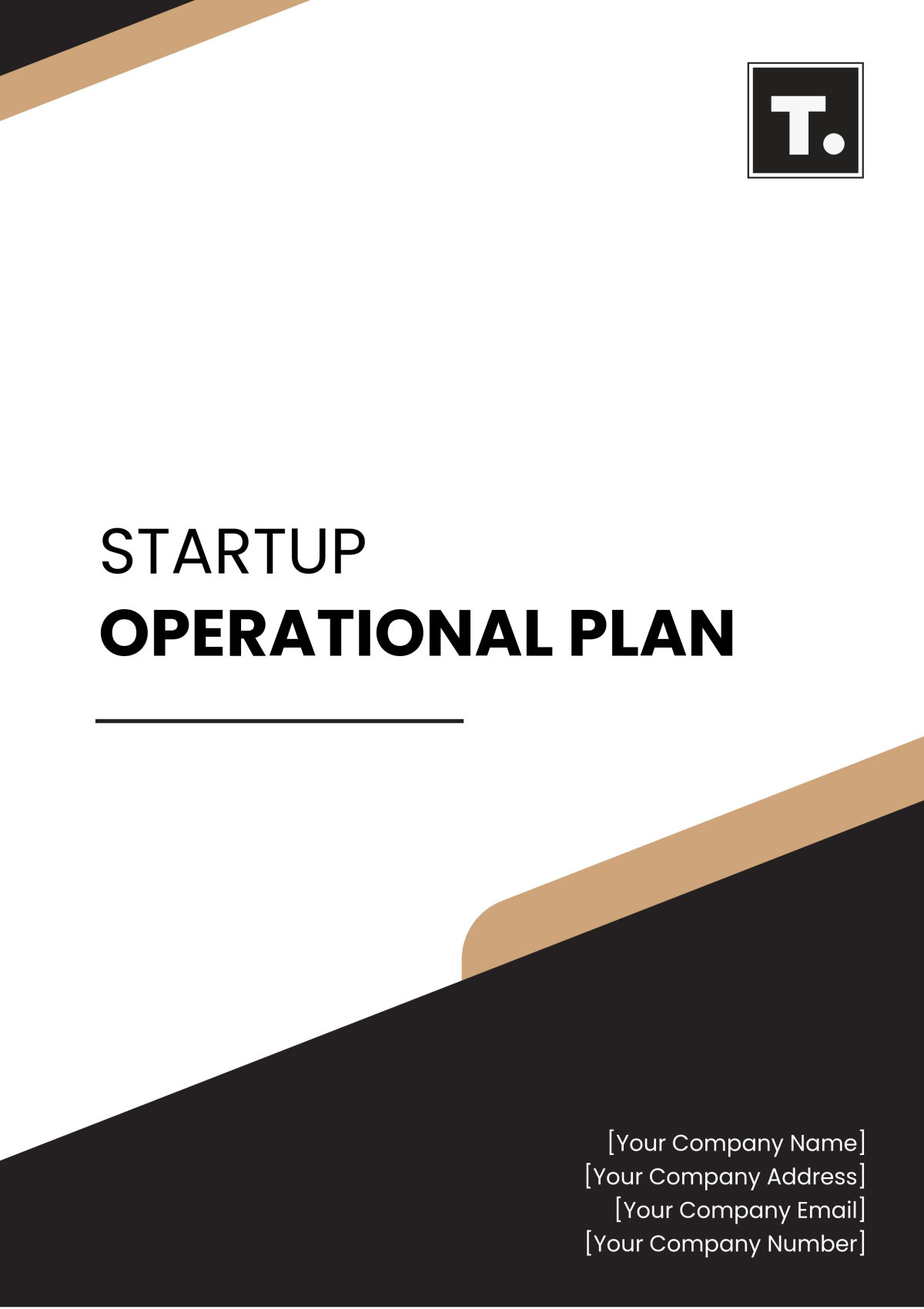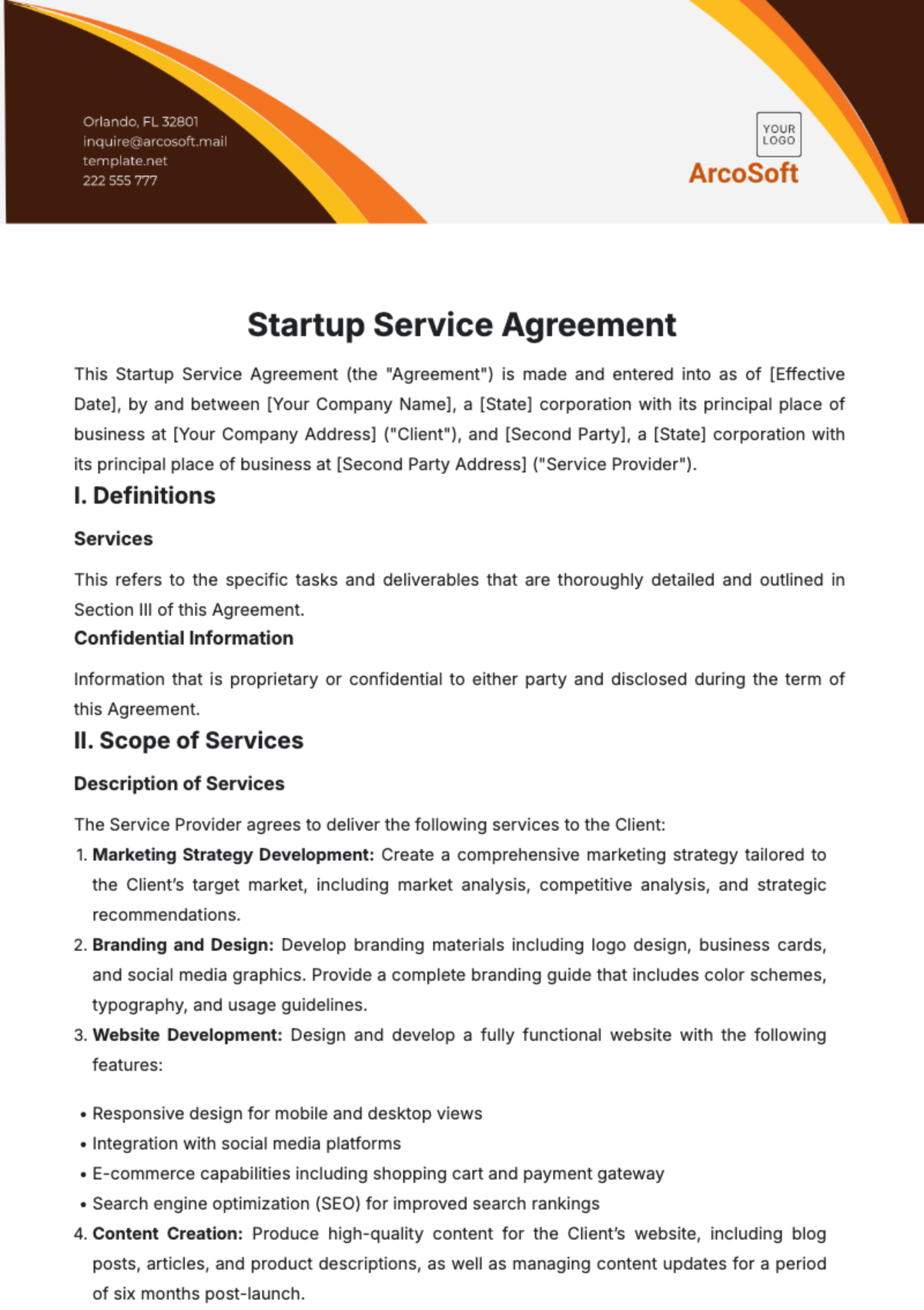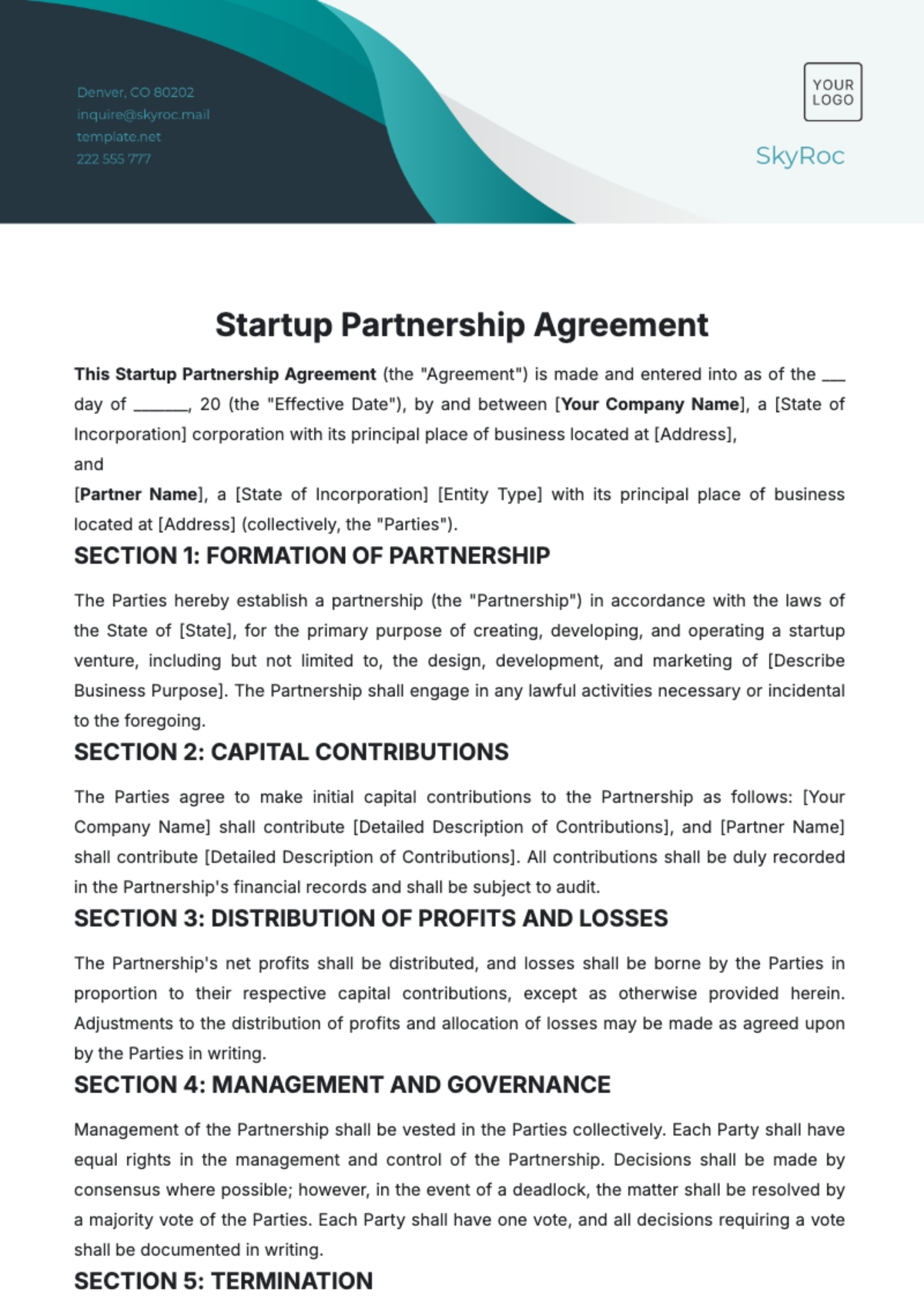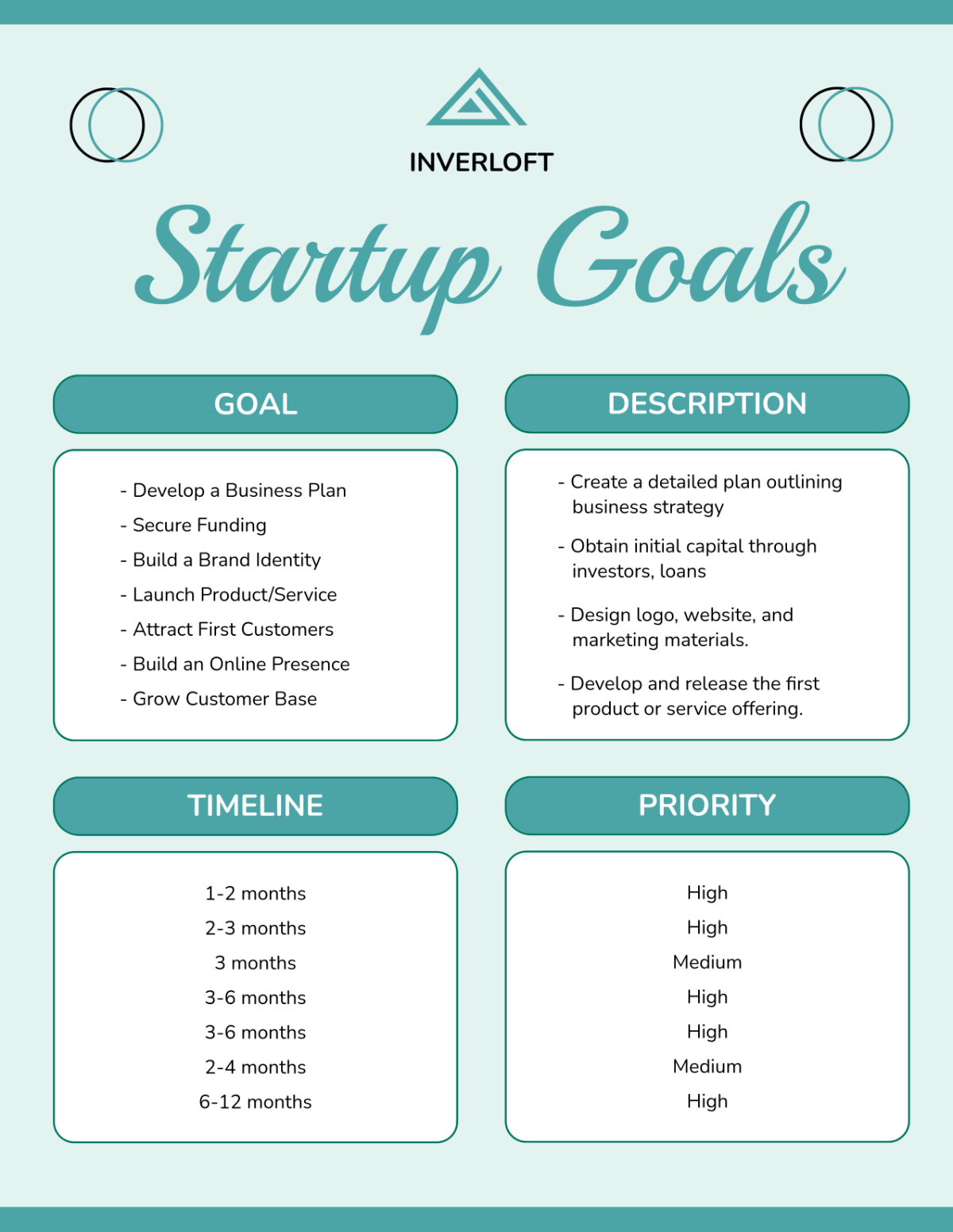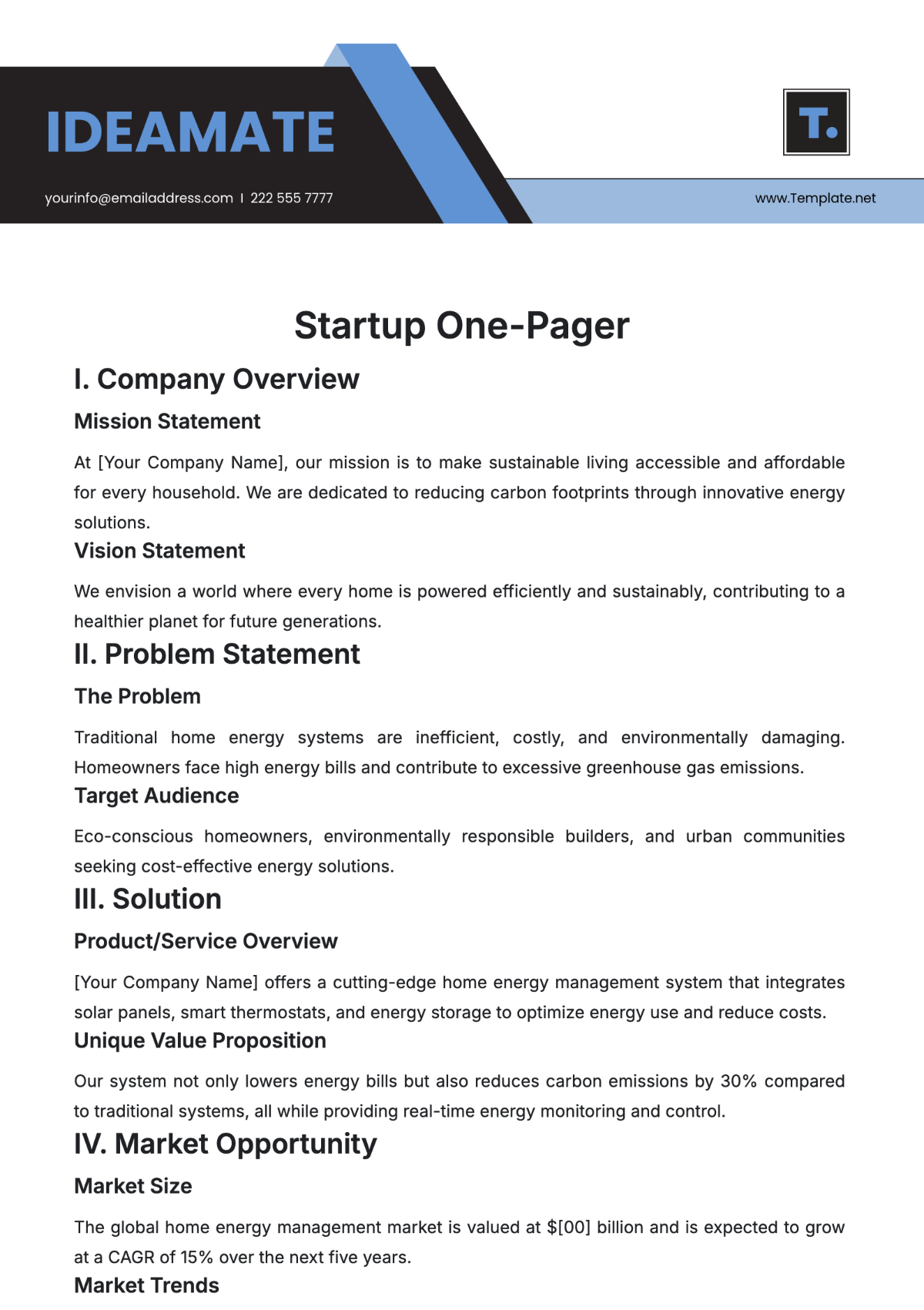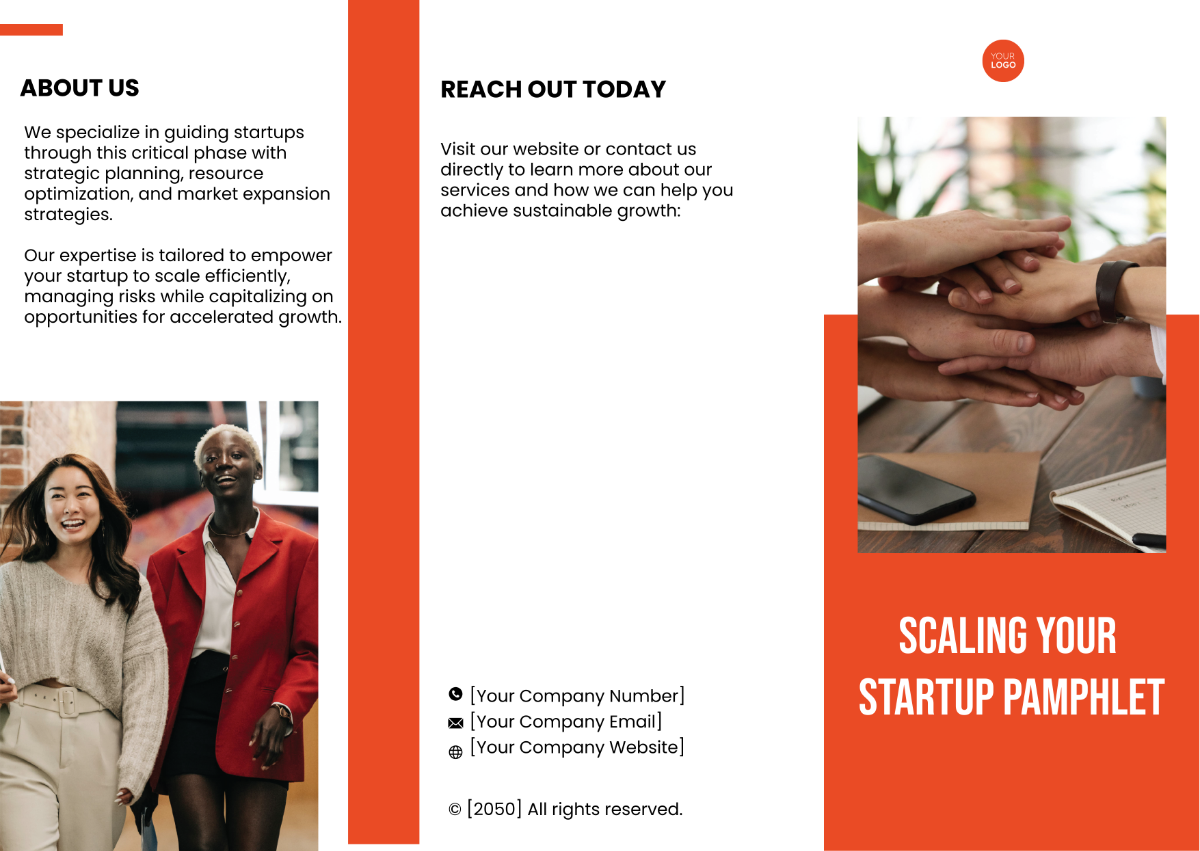Startup Financial Feasibility Study
I. Executive Summary
[Your Company Name] aims to enter the market with an innovative solution that addresses [specific market need]. The feasibility study reveals promising market demand and growth potential, supported by [market research findings]. Financial projections indicate strong revenue growth, with estimated profitability within [timeframe]. However, key risks include [identified risks] that require mitigation strategies for successful implementation.
II. Business Opportunity Analysis
Market Analysis
The market analysis reveals a growing demand for [Your Company Name]'s proposed solution, driven by [specific market trends/statistics]. According to [market research sources], the market for [product/service] is expected to grow at a CAGR of [growth rate]% over the next [timeframe]. This growth is fueled by factors such as [key market drivers], including [list of drivers], and is further supported by [additional market data].
Customer Segments
[Your Company Name] identifies several target customer segments based on [demographic criteria], including [list of customer segments]. Each segment has distinct needs and preferences, such as [specific customer needs], presenting opportunities for tailored marketing strategies and product offerings.
Competitive Landscape
A thorough competitive analysis highlights key competitors in the market, including [competitor names]. Table 1 provides a comparison of [Your Company Name] with its competitors based on factors such as [list of comparison criteria]. [Your Company Name] differentiates itself through its unique value proposition of [unique selling points], which resonates with target customers seeking [specific customer benefits].
Market Entry Strategy
[Your Company Name] plans to enter the market through a multi-faceted strategy designed to maximize market penetration and brand awareness. The following tactics will be employed to achieve these objectives:
Targeted Marketing Campaigns:
Utilizing digital marketing channels, including social media platforms, search engine optimization (SEO), and targeted advertising, [Your Company Name] will engage with its target audience effectively. By leveraging data analytics and consumer insights, the marketing campaigns will be tailored to resonate with the preferences and needs of the target demographic. This approach ensures efficient allocation of resources and maximizes the impact of marketing efforts.
Partnership Development:
[Your Company Name] recognizes the value of strategic partnerships in expanding its market reach and accessing new customer segments. Collaborating with industry partners, such as [industry leaders or complementary businesses], [Your Company Name] will leverage synergies and co-create value-added offerings. These partnerships may include distribution agreements, co-marketing initiatives, or joint product development ventures, enabling [Your Company Name] to tap into existing networks and accelerate market entry.
Product Differentiation:
A key element of [Your Company Name]'s market entry strategy is highlighting its unique value proposition and differentiation factors. By emphasizing [unique features or benefits], [Your Company Name] aims to position itself distinctively in the market and capture the attention of potential customers. Through compelling messaging and storytelling, [Your Company Name] will communicate its brand identity and value proposition effectively, fostering brand loyalty and preference among target audiences.
Online Presence Enhancement:
In addition to targeted marketing campaigns, [Your Company Name] will focus on enhancing its online presence through website optimization, content marketing, and user experience enhancements. A user-friendly and informative website, coupled with engaging content and interactive features, will serve as a valuable touchpoint for potential customers, driving traffic and conversions.
Event Sponsorship and Participation:
[Your Company Name] will actively seek opportunities to sponsor industry events, conferences, and trade shows relevant to its target market. Participation in these events provides [Your Company Name] with visibility and credibility within the industry, facilitating networking opportunities and showcasing its products or services to a captive audience.
Community Engagement Initiatives:
To build rapport and goodwill within the community, [Your Company Name] will initiate community engagement programs, such as charity events, volunteer activities, or sponsorships of local initiatives. These initiatives not only contribute to brand awareness but also demonstrate [Your Company Name]'s commitment to social responsibility, resonating positively with customers and stakeholders alike.
Customer Referral Programs:
[Your Company Name] will implement customer referral programs to incentivize existing customers to refer new customers. By offering rewards or discounts for successful referrals, [Your Company Name] can leverage its existing customer base to expand its reach and acquire new customers cost-effectively.
Content Syndication and Guest Blogging:
[Your Company Name] will engage in content syndication and guest blogging on industry-relevant platforms and publications to increase visibility and establish thought leadership. By sharing valuable insights and expertise, [Your Company Name] can position itself as a trusted authority in the industry, attracting attention and generating leads organically.
Market Opportunity
The combined market analysis, customer segmentation, competitive landscape, and market entry strategy reveal a significant market opportunity for [Your Company Name]. With a clear understanding of customer needs, competitive positioning, and growth prospects, [Your Company Name] is well-positioned to capture market share and establish itself as a leader in the [industry/market].
Competitive Analysis
Criteria | [Your Company Name] | Competitor 1 | Competitor 2 | Competitor 3 |
|---|---|---|---|---|
Product Features | Unique Selling Points | Feature Comparison | Feature Comparison | Feature Comparison |
Price | Competitive Pricing | Price Comparison | Price Comparison | Price Comparison |
Market Share | - | Market Share % | Market Share % | Market Share % |
Customer Satisfaction | High Satisfaction | Satisfaction Rating | Satisfaction Rating | Satisfaction Rating |
Brand Reputation | Strong Brand Image | Reputation Score | Reputation Score | Reputation Score |
III. Financial Projections
Revenue Forecast
The revenue forecast for [Your Company Name] is based on a thorough analysis of market demand, pricing strategy, and sales projections. Table 1 outlines the projected revenue for each year of operation, broken down by product/service category or customer segment. The forecast assumes a conservative growth rate of [growth rate]% annually, reflecting market trends and competitive dynamics.
Year | Product A Revenue | Product B Revenue | Total Revenue |
|---|---|---|---|
Year 1 | $XXX,XXX | $XXX,XXX | $XXX,XXX |
Year 2 | $XXX,XXX | $XXX,XXX | $XXX,XXX |
Year 3 | $XXX,XXX | $XXX,XXX | $XXX,XXX |
Year 4 | $XXX,XXX | $XXX,XXX | $XXX,XXX |
Year 5 | $XXX,XXX | $XXX,XXX | $XXX,XXX |
Cost Analysis
The cost analysis includes both fixed and variable expenses associated with operating [Your Company Name]. Table 2 outlines the projected expenses for each year, including startup costs, operating expenses, marketing costs, and personnel expenses. The cost structure is based on industry benchmarks, vendor quotes, and historical data, ensuring accuracy and reliability in the projections.
Year | Startup Costs | Operating Expenses | Marketing Costs | Personnel Expenses | Total Expenses |
|---|---|---|---|---|---|
Year 1 | $XXX,XXX | $XXX,XXX | $XXX,XXX | $XXX,XXX | $XXX,XXX |
Year 2 | $XXX,XXX | $XXX,XXX | $XXX,XXX | $XXX,XXX | $XXX,XXX |
Year 3 | $XXX,XXX | $XXX,XXX | $XXX,XXX | $XXX,XXX | $XXX,XXX |
Year 4 | $XXX,XXX | $XXX,XXX | $XXX,XXX | $XXX,XXX | $XXX,XXX |
Year 5 | $XXX,XXX | $XXX,XXX | $XXX,XXX | $XXX,XXX | $XXX,XXX |
Profitability Analysis
The profitability analysis assesses the net income and profit margins of [Your Company Name] over the projected period. Table 3 presents the projected net income for each year, calculated by subtracting total expenses from total revenue. The analysis indicates a positive net income by Year 3, with steady growth in subsequent years.
Year | Total Revenue | Total Expenses | Net Income |
|---|---|---|---|
Year 1 | $XXX,XXX | $XXX,XXX | $XXX,XXX |
Year 2 | $XXX,XXX | $XXX,XXX | $XXX,XXX |
Year 3 | $XXX,XXX | $XXX,XXX | $XXX,XXX |
Year 4 | $XXX,XXX | $XXX,XXX | $XXX,XXX |
Year 5 | $XXX,XXX | $XXX,XXX | $XXX,XXX |
IV. Investment Requirements
Startup Costs
[Your Company Name] requires an initial investment to cover various startup costs associated with launching the business. These costs include but are not limited to:
Product Development: Investment in research and development (R&D) to develop and refine the product or service offering.
Technology Infrastructure: Acquisition of necessary hardware, software, and IT infrastructure to support operations.
Legal and Regulatory Compliance: Expenses related to obtaining licenses, permits, and legal counsel to ensure compliance with regulations.
Marketing and Branding: Investment in marketing and branding initiatives to build awareness and attract customers.
Initial Inventory or Supplies: Purchase of initial inventory or supplies required to commence operations.
Category | Estimated Cost |
|---|---|
Product Development | $XXX,XXX |
Technology Infrastructure | $XXX,XXX |
Legal and Compliance | $XXX,XXX |
Marketing and Branding | $XXX,XXX |
Initial Inventory | $XXX,XXX |
Total Startup Costs | $X,XXX,XXX |
Operating Expenses
In addition to startup costs, [Your Company Name] will incur ongoing operating expenses to support day-to-day business activities. These expenses may include:
Rent and Utilities: Costs associated with leasing office space or facilities and utility bills.
Personnel Costs: Salaries, wages, benefits, and payroll taxes for employees.
Marketing and Advertising: Ongoing expenses for marketing campaigns, advertising, and promotional activities.
Administrative Expenses: Costs for office supplies, insurance, professional services, and other administrative needs.
Research and Development: Continued investment in product development and innovation to maintain competitiveness.
Yr | Rent and Utilities | Personnel Costs | Marketing Expenses | Administrative Expenses | R&D Expenses | Total Operating Expenses |
|---|---|---|---|---|---|---|
1 | $XXX,XXX | $XXX,XXX | $XXX,XXX | $XXX,XXX | $XXX,XXX | $XXX,XXX |
2 | $XXX,XXX | $XXX,XXX | $XXX,XXX | $XXX,XXX | $XXX,XXX | $XXX,XXX |
3 | $XXX,XXX | $XXX,XXX | $XXX,XXX | $XXX,XXX | $XXX,XXX | $XXX,XXX |
4 | $XXX,XXX | $XXX,XXX | $XXX,XXX | $XXX,XXX | $XXX,XXX | $XXX,XXX |
5 | $XXX,XXX | $XXX,XXX | $XXX,XXX | $XXX,XXX | $XXX,XXX | $XXX,XXX |
Total Investment Requirements
The total investment requirements for [Your Company Name] encompass both startup costs and operating expenses for the specified period. Table 3 summarizes the total investment requirements, including estimates for each category and the overall funding needed to launch and sustain operations.
Category | Total Investment |
|---|---|
Startup Costs | $X,XXX,XXX |
Operating Expenses | $X,XXX,XXX |
Total Investment Required | $X,XXX,XXX |
V. Risk Analysis
Market Risk
Market risk encompasses factors such as changes in consumer preferences, economic downturns, and shifts in industry trends that may impact [Your Company Name]'s ability to attract customers and generate revenue. To mitigate market risk, [Your Company Name] will conduct ongoing market research and analysis to stay abreast of changing market dynamics and adapt its strategies accordingly. Additionally, diversification of product offerings and target markets can help mitigate the impact of market fluctuations.
Technology Risk
Technology risk refers to the possibility of disruptions or failures in [Your Company Name]'s technology infrastructure, software systems, or product development processes. To address this risk, [Your Company Name] will invest in robust IT infrastructure, implement redundancy measures, and regularly update and maintain technology systems. Collaboration with reliable technology partners and continuous monitoring of emerging technologies will also help mitigate technology-related risks.
Regulatory Compliance Risk
Regulatory compliance risk arises from changes in laws, regulations, or industry standards that may affect [Your Company Name]'s operations, product offerings, or market access. [Your Company Name] will work closely with legal advisors and regulatory experts to ensure compliance with relevant laws and regulations. Regular audits and reviews of policies and procedures will help identify and address any compliance gaps proactively.
Financial Risk
Financial risk encompasses factors such as cash flow fluctuations, funding shortages, and debt obligations that may impact [Your Company Name]'s financial stability and liquidity. [Your Company Name] will maintain prudent financial management practices, including budgeting, forecasting, and cash flow analysis, to mitigate financial risks. Diversification of funding sources and conservative debt management strategies will also help mitigate financial risk.
Operational Risk
Operational risk refers to risks associated with [Your Company Name]'s day-to-day operations, including supply chain disruptions, staffing shortages, and production delays. [Your Company Name] will implement robust operational processes and contingency plans to mitigate operational risks. Regular training and development programs for staff will ensure that employees are equipped to handle operational challenges effectively.
Strategic Risk
Strategic risk relates to [Your Company Name]'s strategic decisions and actions that may impact its long-term success and competitiveness. [Your Company Name] will conduct thorough strategic planning and scenario analysis to identify and evaluate potential strategic risks. Regular review and reassessment of strategic objectives and initiatives will help [Your Company Name] adapt to changing market conditions and minimize strategic risks.
Supply Chain Risk
Supply chain risk refers to the potential disruptions or vulnerabilities within [Your Company Name]'s supply chain that may impact production, distribution, or delivery of goods or services. [Your Company Name] will assess its supply chain for potential risks, including supplier dependencies, transportation challenges, and geopolitical instability. Implementation of alternative sourcing strategies, supplier diversification, and inventory management techniques will help mitigate supply chain risks and ensure continuity of operations.
Cybersecurity Risk
Cybersecurity risk encompasses threats to [Your Company Name]'s data, systems, and digital assets from malicious actors, cyberattacks, or data breaches. [Your Company Name] will prioritize cybersecurity measures to safeguard sensitive information, including encryption, firewalls, intrusion detection systems, and regular security audits. Employee training and awareness programs will promote cybersecurity best practices and mitigate the risk of human error or negligence.
VI. Conclusion
The feasibility study underscores [Your Company Name]'s potential to succeed in the market, supported by strong market demand, compelling financial projections, and proactive risk management strategies. With careful execution and diligent monitoring, [Your Company Name] can navigate challenges and capitalize on opportunities to achieve sustainable growth and profitability in the [industry/market].
